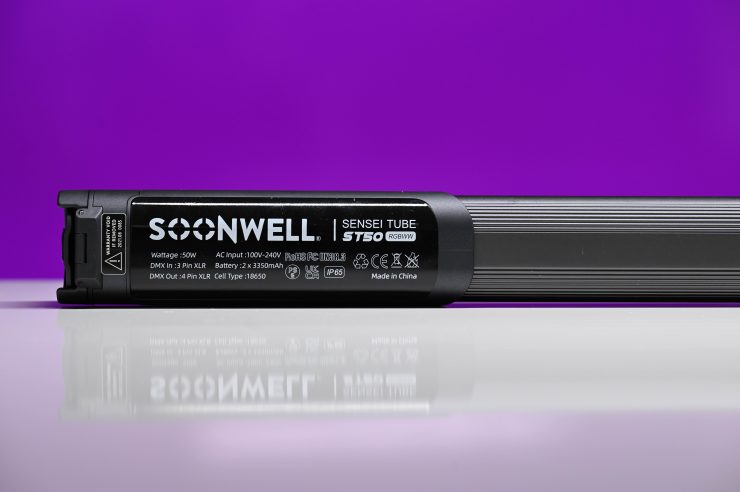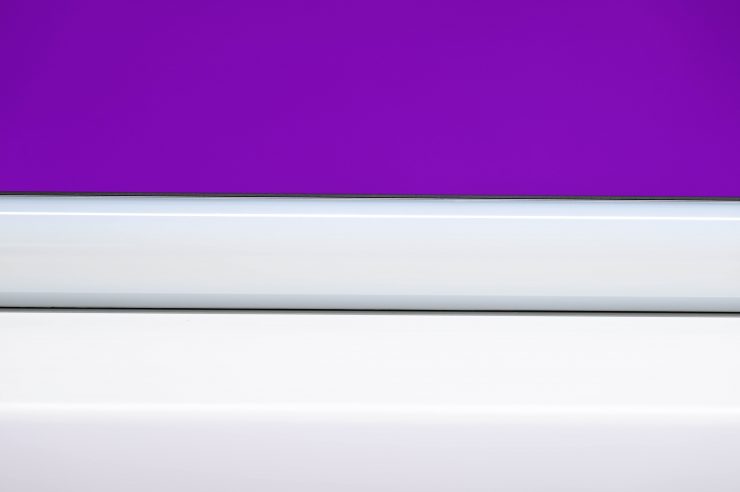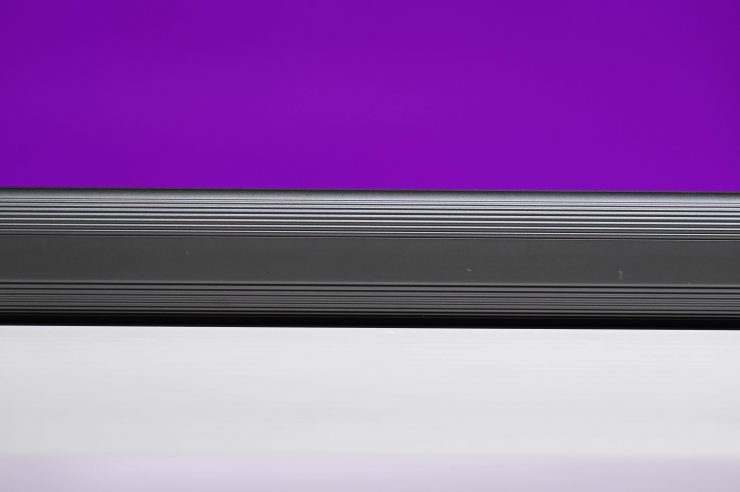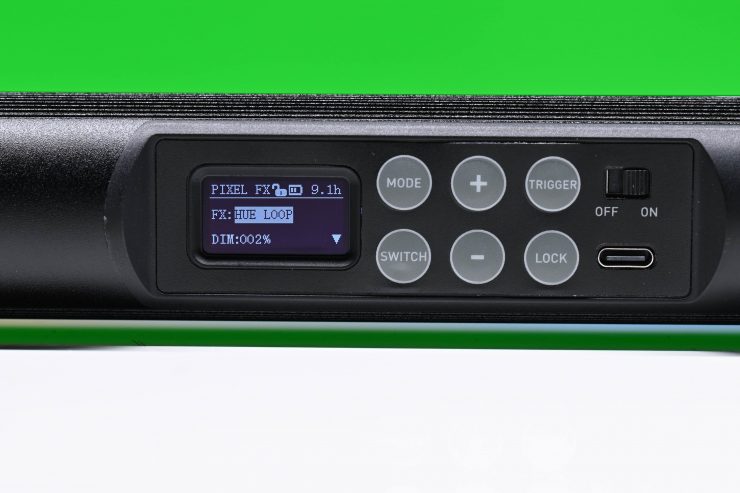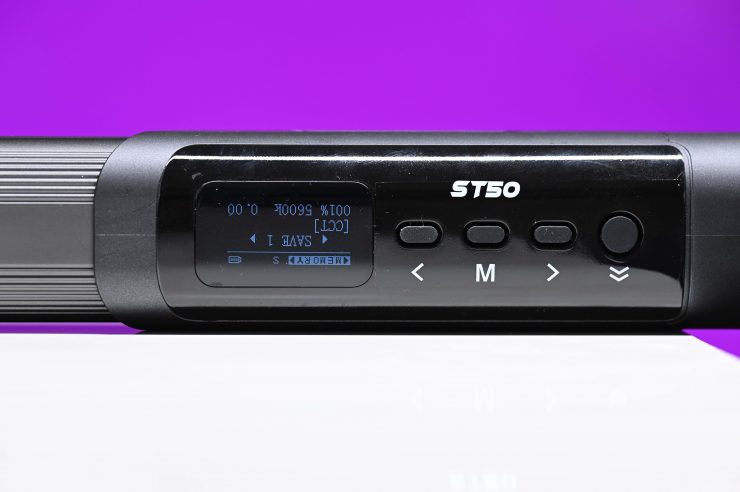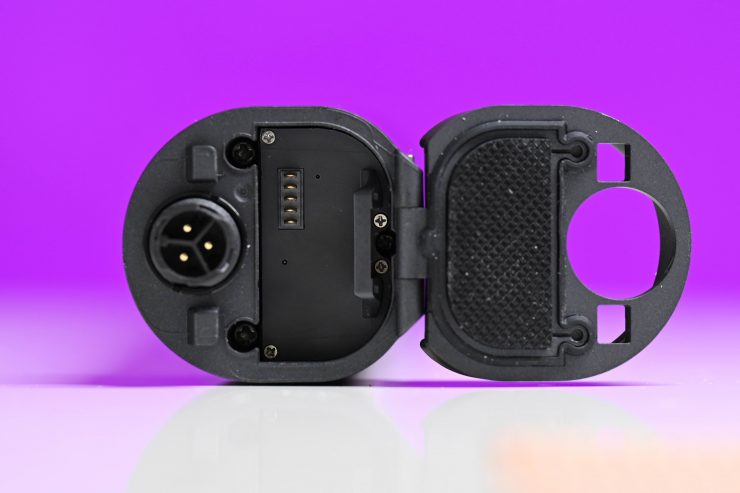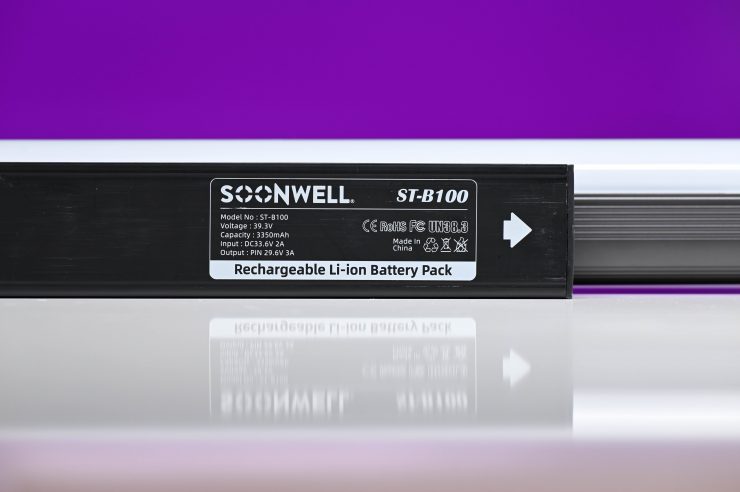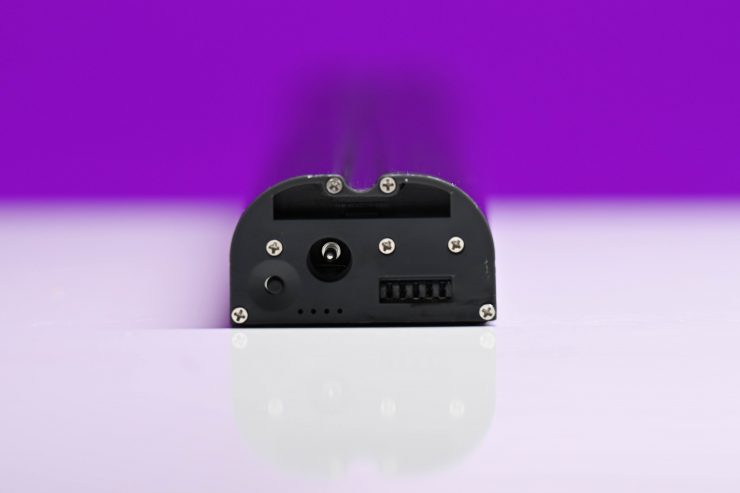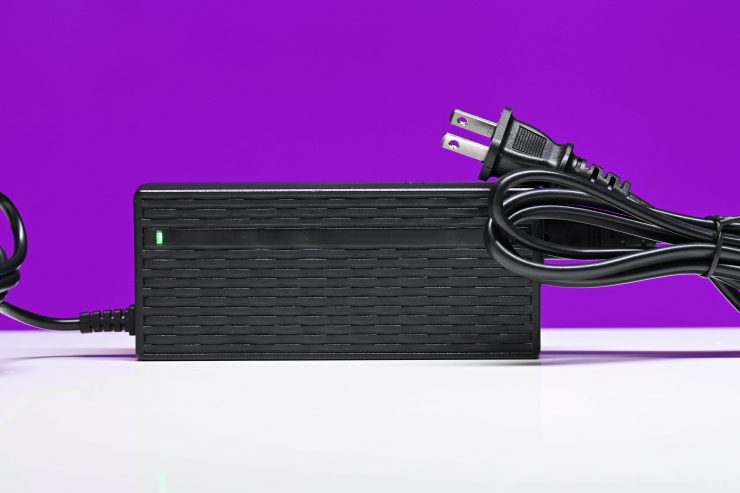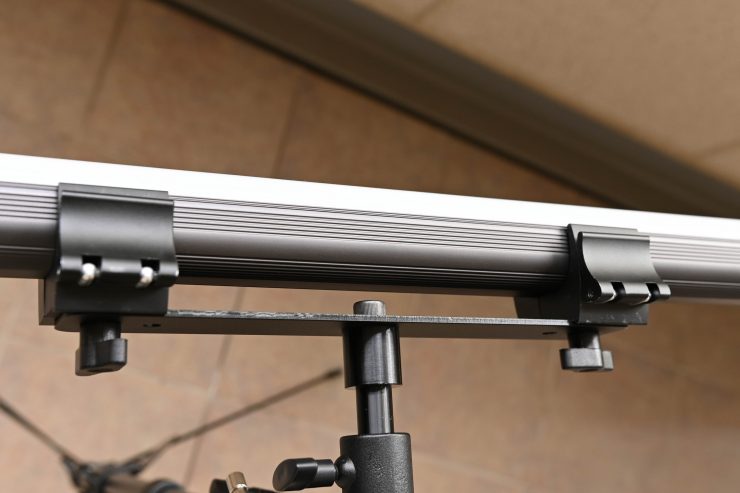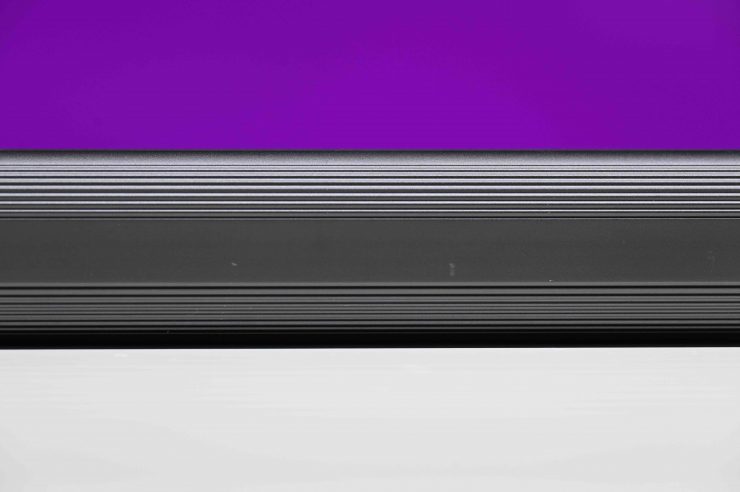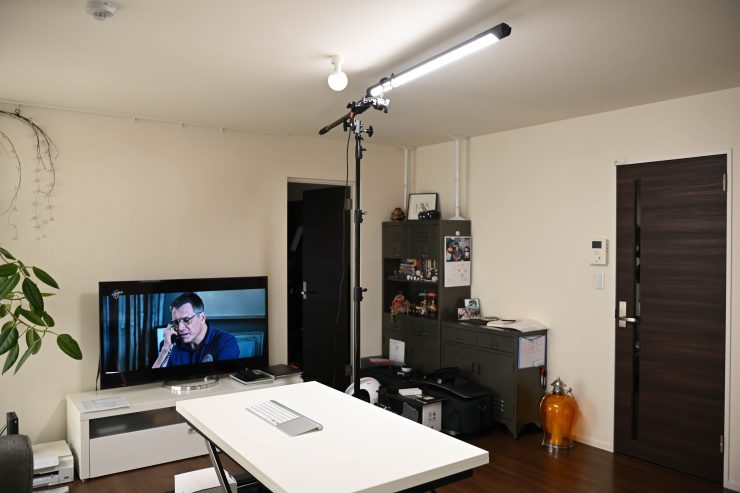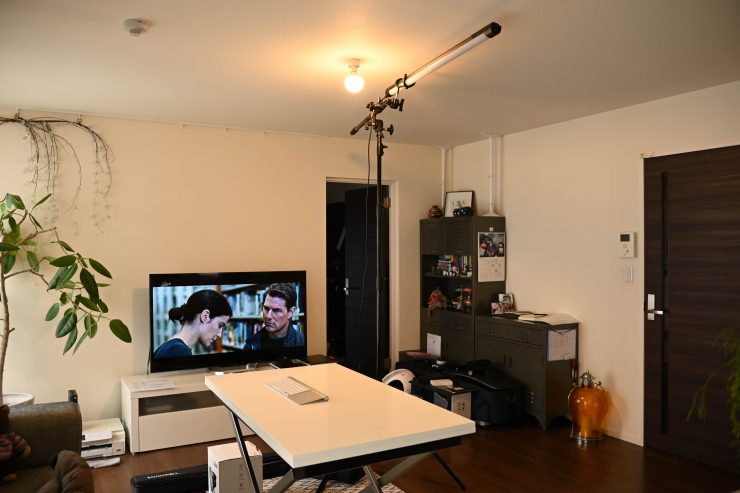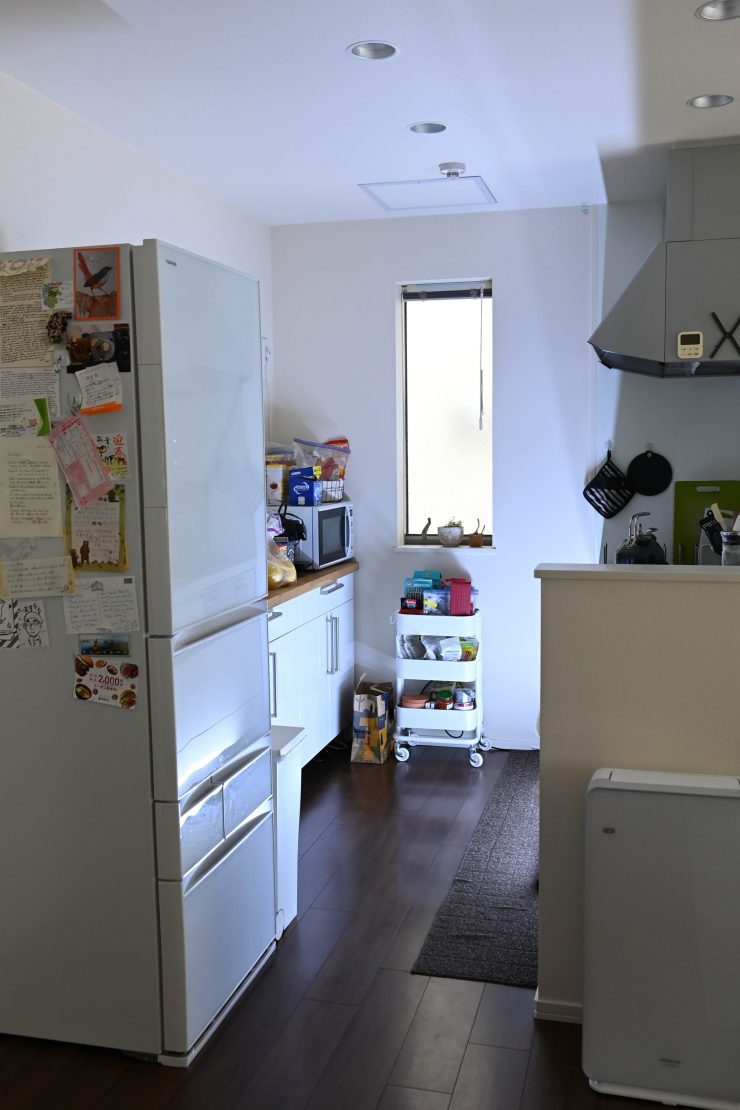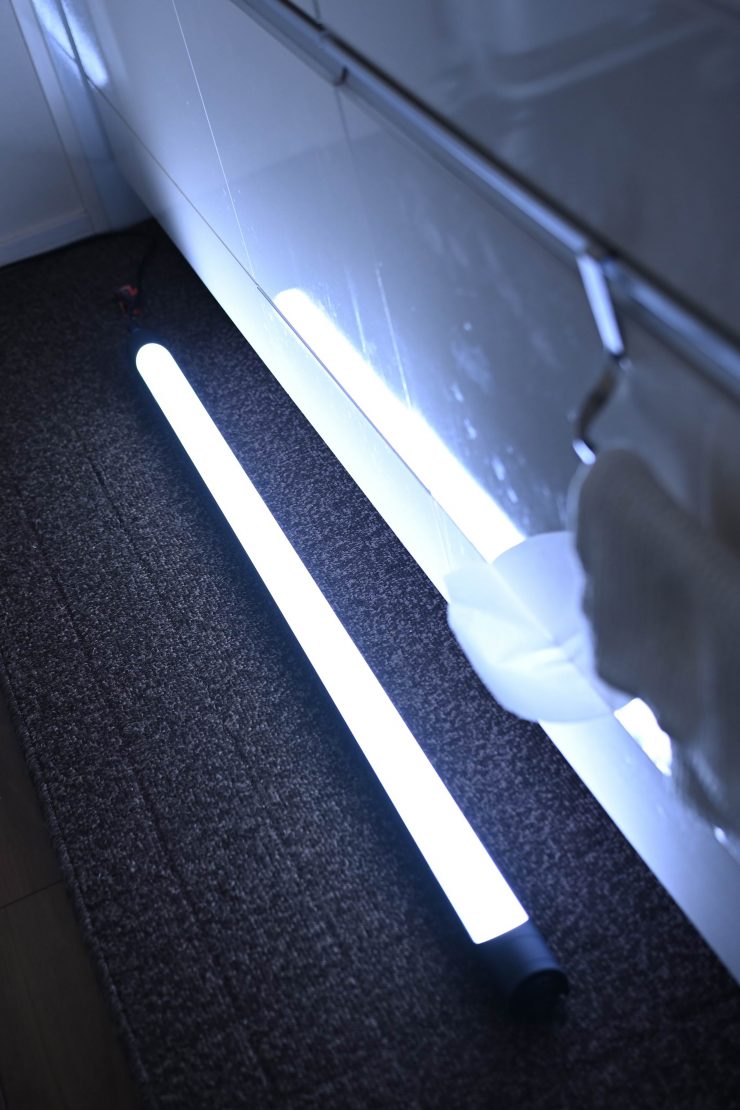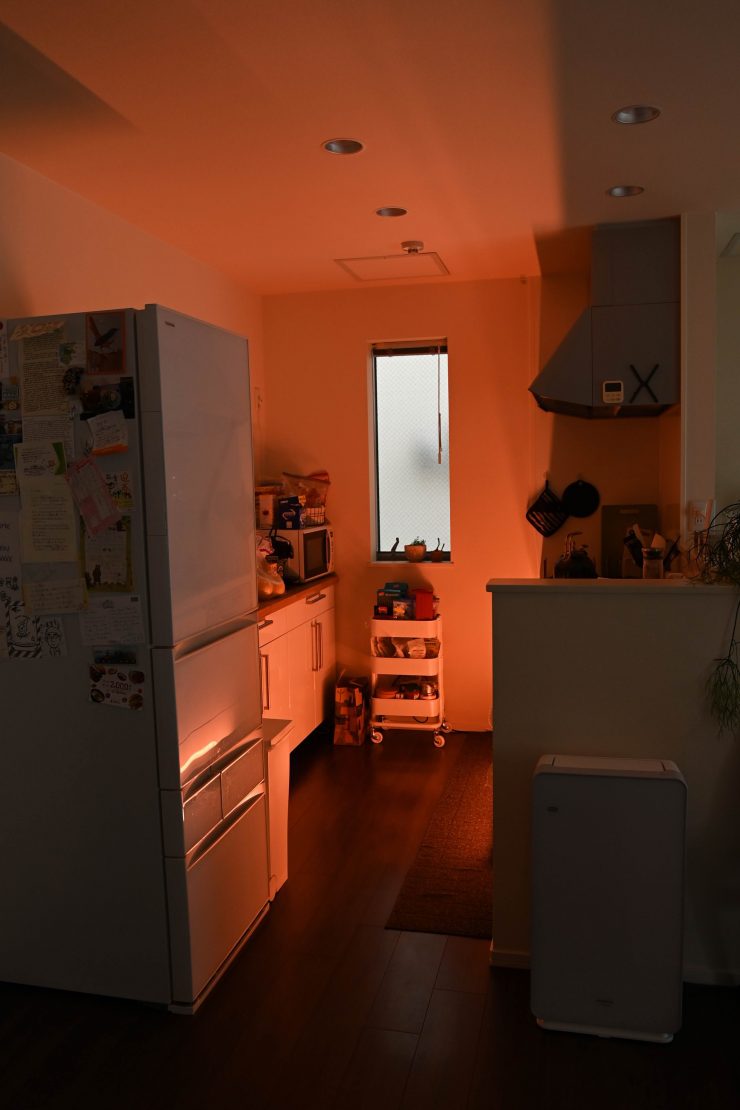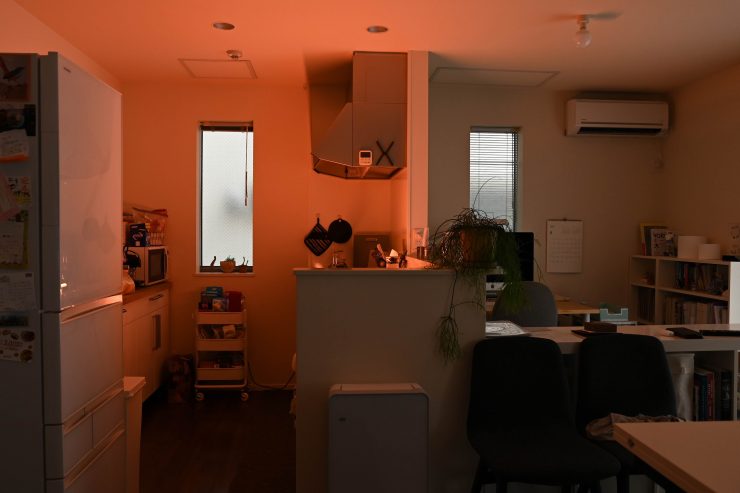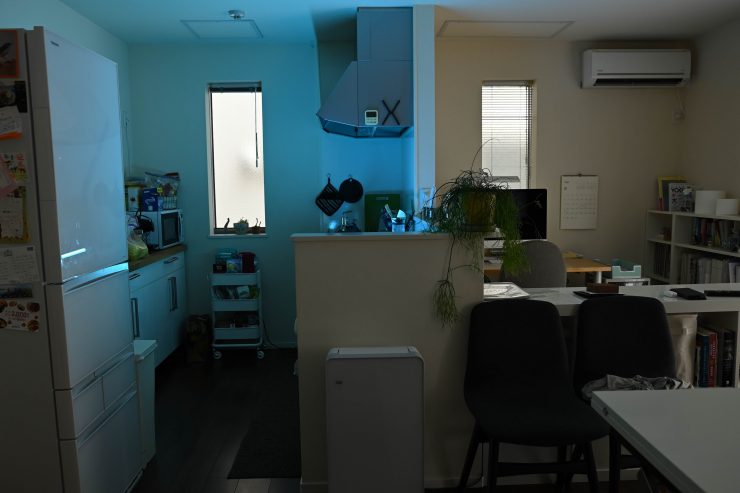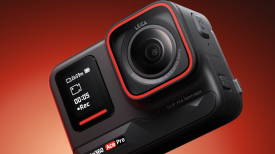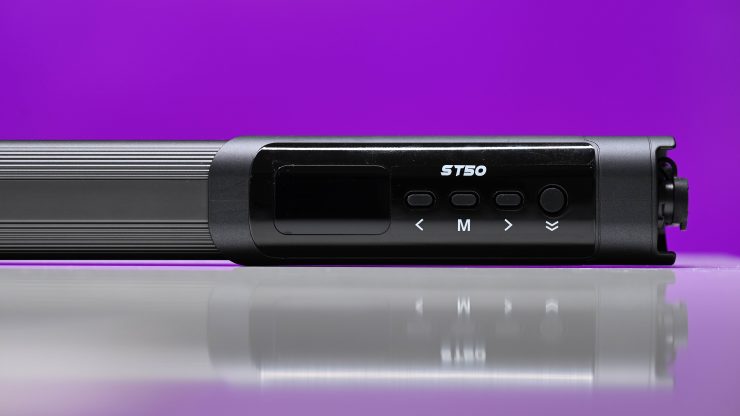
SOONWELL recently introduced the Sensei RGBW Tubes, a range of battery-powered LED tube lights.
The Sensei RGB Tubes are available in the following three models:
- ST25 RGBW Tube (25W)
- ST50 RGBW Tube (50W)
- ST100 RGBW Tube (100W)
RGB tube lights have a wide color control and a form factor that makes them useful for discreet lighting effects and placement in confined or hard-to-reach places. They are also versatile enough that you could use them for interviews or any other normal lighting application.
For this review, I am going to be looking at the ST50 RGBW Tube (50W).
Quick Introduction
The tubes have a color temperature range of 1600K to 20000K, they can be powered off batteries or AC, they are IP 67 waterproof, and they have built-in effects and gels as well as the usual operating modes like CCT, HSI, RGBW, and X-Y.
What do you get?
The Sensei ST100 comes with the following items:
- 1x ST50 RGBW Tube Light
- 1x STB100 Battery Stick
- 1x 33.6v Battery Charger
- 1x AC Power Cable
- 1x Mounting Plate
- 1x Mini Tripod
- 2x Tube Clip
- 1x E-type Connector
- 1x U-type connector
- 1x Wire Rope
- 1x User Manual
- 1x Travel Case
Design & Concept

Tube lights are not a new concept. Fluorescent tubes have been around for a very long time, and over the last 2-3 years we have seen quite a lot of RGB options coming to market. Tube lights can be a nice addition to any lighting kit and traditionally they have been able to produce a nice quality of light.
SOONWELL set out to design RGBW tube lights that come with a lot of features and functionality at an affordable price. The first RGB tube lights that came out tended to be expensive, but now there are a lot of affordable options on the market to choose from.
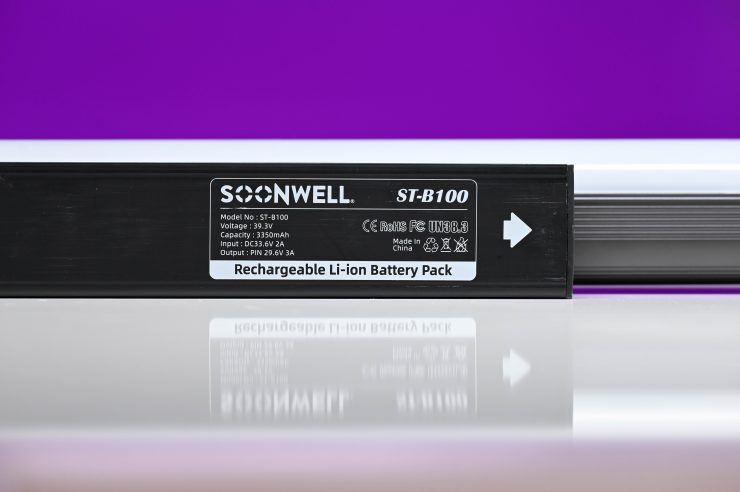
This was designed to be an all-in-one unit, where you can run it off the included battery or via mains power.
To me personally, being able to un a tube light off a battery is essential. Often I like to use lights such as these as replacements for practicals and actually have them visible in a shot. Not having to run power cables and then try and work out how to hide them solves a lot of time. It also allows someone to handhold the tube if you require a bit of fill when shooting quickly. You can also have someone hold onto the tube or mount it to a boom pole if you need to move with a subject but you need some extra light.
This all-in-one design should make it relatively quick to set up and use, however, the inherent problem with tube lights is you have to attach them to something unless you are simply laying the light flat on the ground. The issue with the Sensei ST50 is it doesn’t have a single mounting point on the light itself.
This is both good and bad depending on how you look at it. It is bad because you can’t just mount it to something quickly, but conversely, it is good because you don’t want to be putting all of that weight onto a 1/4 20″ or 3/8″ mounting hole. More on the mounting solutions later in the review.
The other problem with long tube lights is when it comes to transportation and storage. Due to their length, they can be an awkward item to transport. This is something you need to keep in mind when you consider buying a tube light.

The light comes in a soft/hard bag, which is probably robust enough to transport on a plane if need be. It is nice that you get a bag like this instead of a completely soft bag that you can’t use for anything other than storage.
It is worth noting that the Sensei tubes, just like the options from Astera, Digital Sputnik, and Qusar Science are T12 sized tubes.
Build Quality
The overall build quality is pretty good, and the actual tube and casing are solidly made. It does, however, have plastic on both ends of the tube.
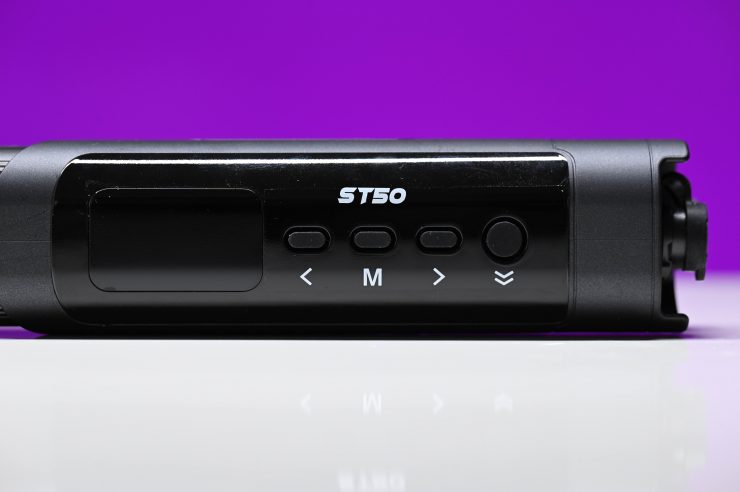
The buttons are reasonably tactile and they get the job done. The LCD display is fairly average, and it isn’t overly bright, so it is hard to see in certain lighting conditions.
It is hard to judge just how robust these lights are and how they would hold up to extensive use. I wish I could be more specific than that, but I’m in no position to comment on longevity after only spending a few weeks with the lights.
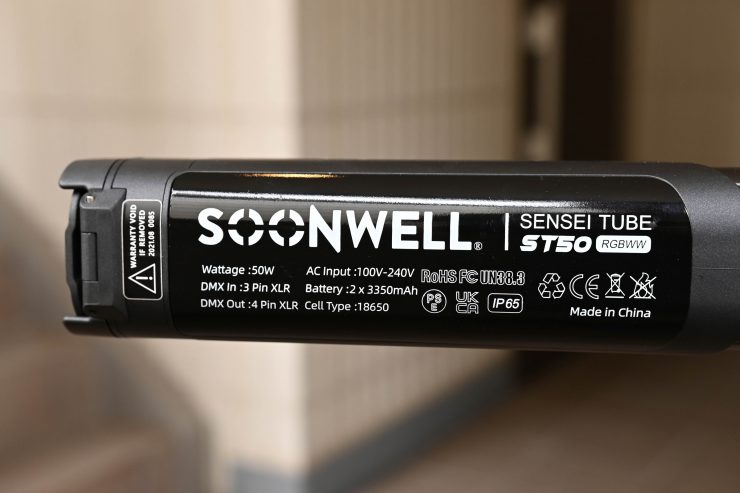
I’m not a big fan of having branding all over the lights and I’m glad that SOONWELL only put some small branding on the back of the tube. The last thing a user wants is branding on the front of a fixture, especially since tube lights are often used as replacements for practicals.
The light is IP65 rated, so you can use it outdoors in inclement conditions. IP65 means it offers protection from water, including water projected by a nozzle against the enclosure from any direction.
Weight

The Sensei ST50 tips the scales at around 1.5kg / 3.30 lb with the battery inside.
While the fixture isn’t that heavy, you have to factor in the mounting brackets, and associated stands you also need to carry around to use them. The total weight of the light with its included accessories and the travel case is 5.6kg / 12.34 lb.
If you are running the ST50 via the removable battery you need to take note that if you are mounting the fixture vertically, most of the weight is concentrated at one end of the ST50 where the battery goes. You really do need to lock it down very tightly otherwise it will have a tendency to fall to one side.
Controls & Menu System
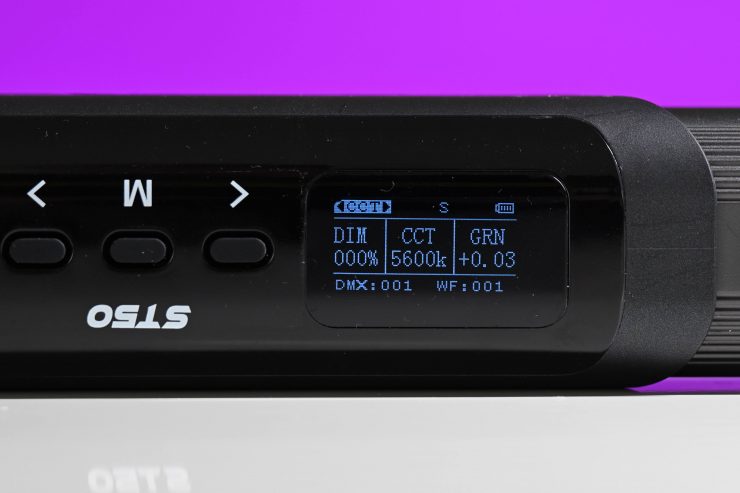
The controls and menu system are fairly straightforward to use. The LCD screen is a reasonable size, however, it is displayed upside down for some strange reason. I originally thought it must auto rotate depending on the position of the light, but that is not the case. I then tried to see if there was anything in the menu regarding the screen orientation and there wasn’t.
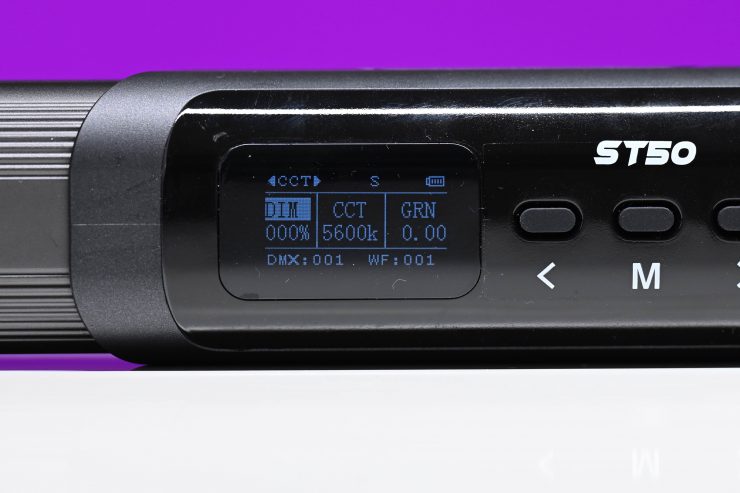
Eventually, I found that if you lay the ST50 down on a flat surface with it facing a certain direction and turned it on, the screen direction would come up the right way. This is really bizarre.
Attention to detail is what usually separates ‘bugdet’ products and high-end products. Often in our industry with more affordable products you will see a lack of attention to detail. Having an LCD screen that only gets displayed the correct way up if you turn it on when it is positioned in a certain way tells me a lot about the product.

The buttons, for making changes to things such as Kelvin color temperature and intensity are easy to use. When you are adjusting the Kelvin color temperature you can only do it in increases or decreases of 100K. You can adjust the intensity in increments of 1%. If you hold down the buttons you can adjust the intensity and Kelvin color temperature rapidly.
I found making basic changes to be fairly simple, but the light does have a lot of page menus and this does slow you down. Tube lights, at least in my opinion, are much easier to control via an App as they are usually places or used in positions where seeing the screen or accessing the controls can be difficult.

Here lays the issue with the Sensei Tubes. While they do have W-Fi built-in you have to purchase an optional Wireless Router Box-CW1 to be able to control the light via an App or via DMX. At the time of writing this, there wasn’t any App available for me to download and use.
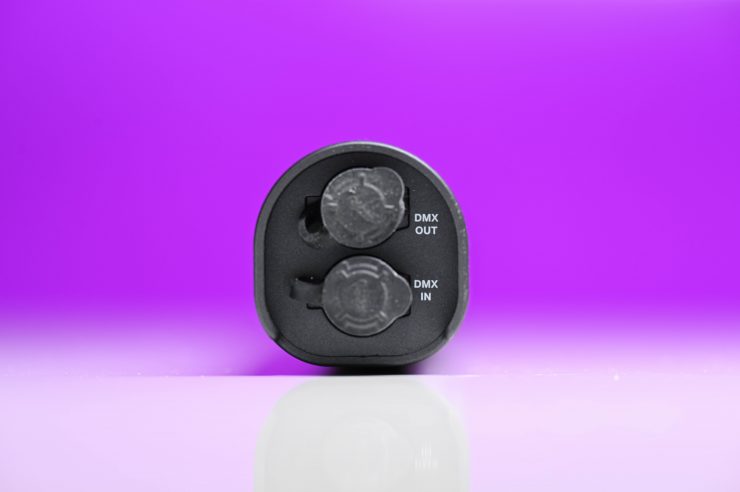
The tubes do have both DMX In and DMX Out so you can connect them together and operate them individually or as a group.
Operating Modes
Depending on what operating mode you are in, the Sensei Tubes can be configured to work in a variety of ways:
- CCT Mode
- CCT-S Mode
- X-Y Mode
- HSI Mode
- RGBWW Mode
- Set-C Mode
- Effects Mode
- Filters Mode
- Memory Mode
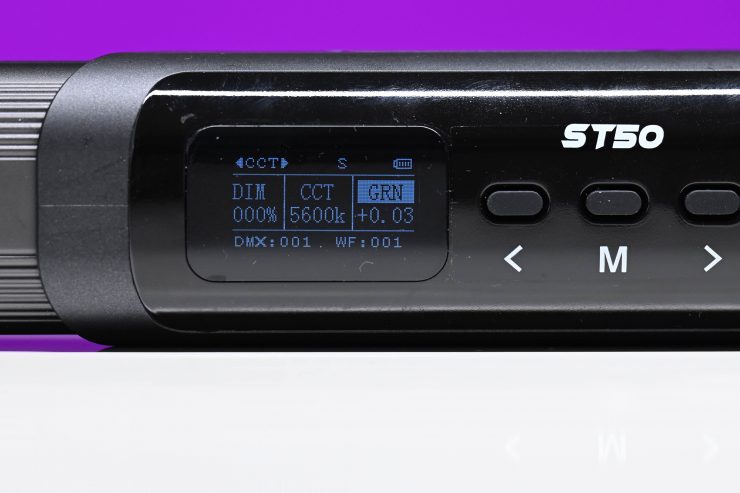
There is a normal CCT Mode where you can adjust the Kelvin color temperature between 2700K to 6000K. There is also a wide temperature mode where you can set the light from 1600K to 20000K. There are also controls to make +/- Green/Magenta adjustments.
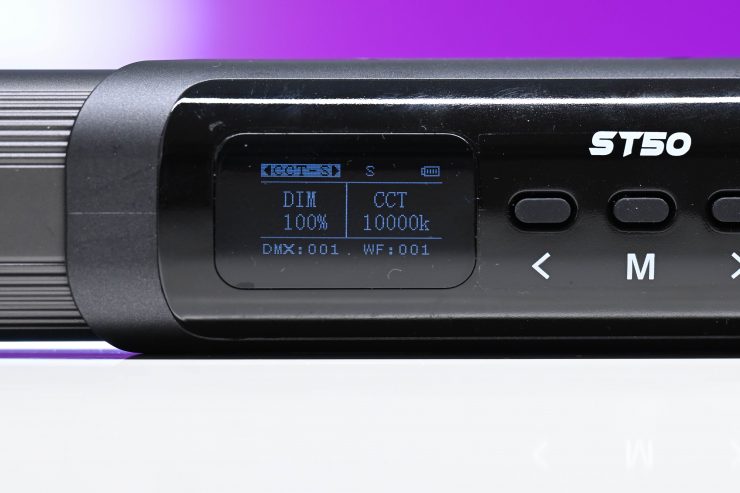
The CCT-S Mode is essentially the same as the CCT Mode except you can adjust the Kelvin color temperature from 1600K up to 20000K. I am not sure why they needed a separate CCT mode if the light was capable of doing this.

X-Y Mode as its name suggests, lets you adjust the individual X and Y coordinates.
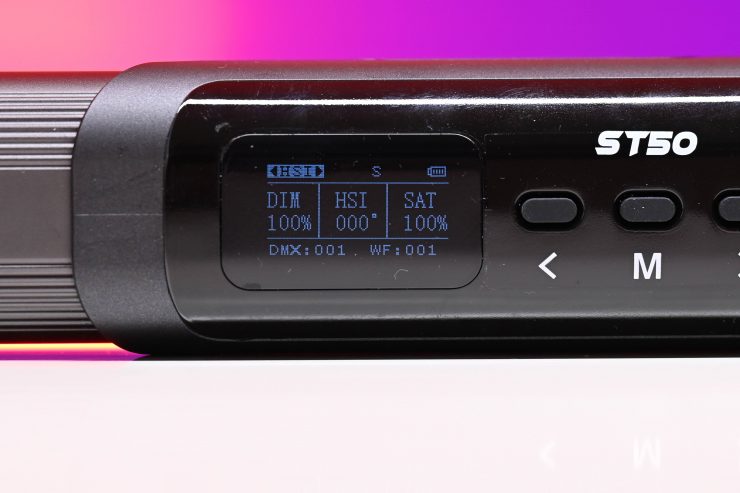
HSI Mode lets you adjust the hue, saturation, and intensity of the light. In this mode, you can create a multitude of different colors and looks.

The RGBWW Mode lets you individually control the amount of red, green, blue, and white light.

The Set-C Mode basically allows you to choose from a variety of preset colors.

The Effects Mode as its name suggests, lets you create effects such as White Cycle, Warm Cycle, CCT jump, CCT Cycle, HSI Cycle, HSI Jump, Welding, Explosion, Fireworks, Bad Bulb, Party, Fire, Paparazzi, TV, Cop car, Storm, HSI Pulse, CCT Pulse. HSI Flash, and CCT Flash.
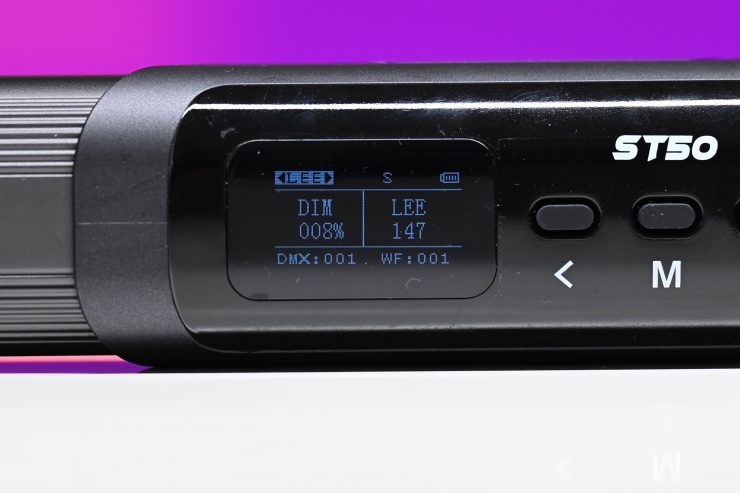
Filters Mode is a mode that lets you re-create popular Lee filters.
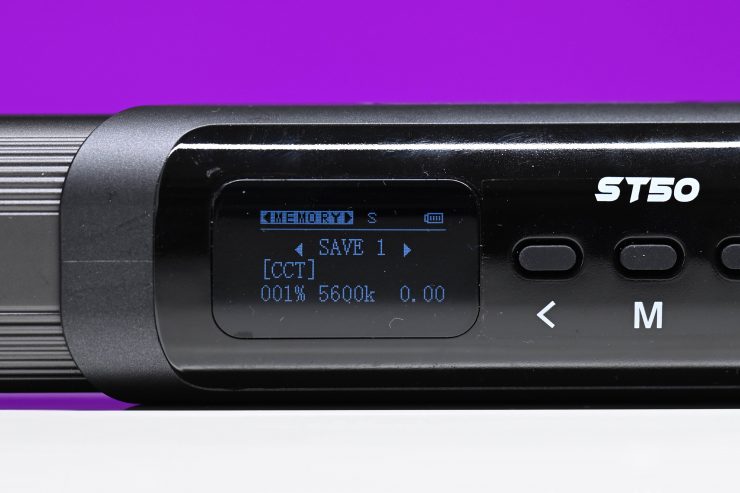
Memory Mode allows you to save preset lighting conditions and recall them.
Power & Battery
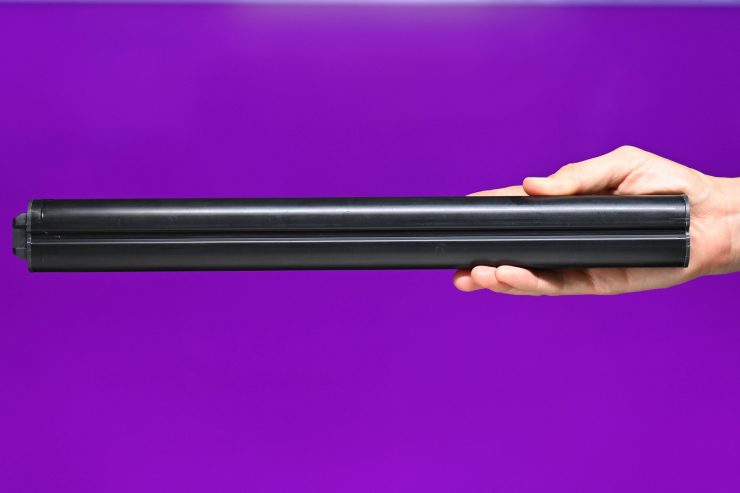
The Sensei ST50 draws 50W of power. As I mentioned earlier, it features a removable 33.9V 3350mAH Lithium-ion battery. The battery is huge and it accounts for a lot of the weight of the light.
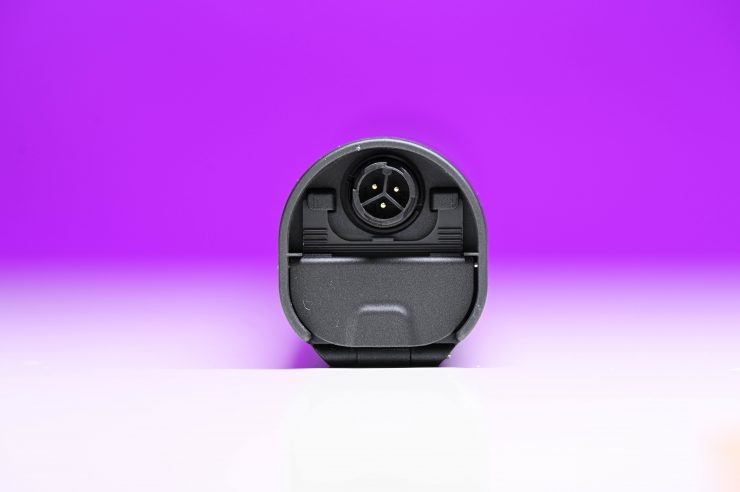
You can also run the ST50 via mains power. The light comes with an AC power cable. You don’t have to have the removable battery in the ST50 to use it. It will run via mains power with the battery removed.
The charging port for the battery is not at the top of the battery, so you can’t just open the hatch on the Sensei Tube and then plug it in.
You need to remove the battery and use a separate power supply and cable to charge the battery, you can’t charge the battery while it is in the light. Some of the design choices that have been made by SOONWELL are truly baffling.
Another issue I encountered is when I plugged the light into mains power it just comes on and you can’t turn it off! You have to physically pull the cable out and then turn it off. The LCD screen also starts having a rolling frequency issue. Again, the attention to detail is sorely lacking.
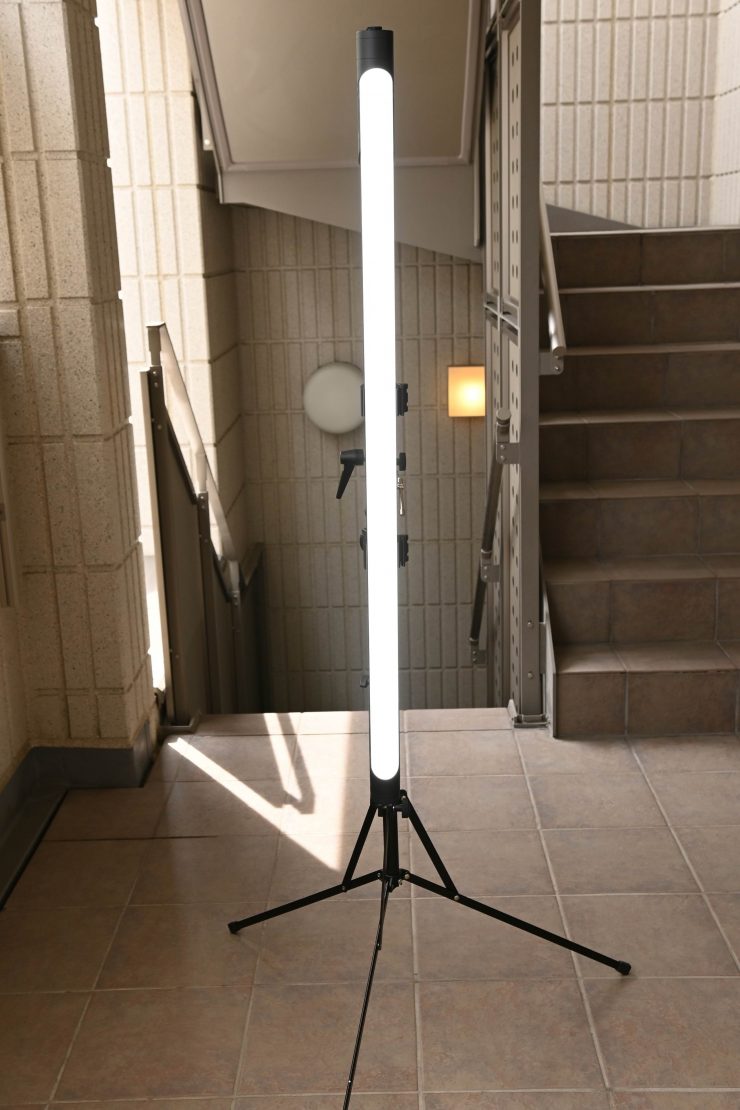
Tube lights are great as practical replacements, but if they are going to be visible in shot, a lot of times you will want to run them via a battery and you want that battery to last for a reasonable amount of time.
According to SOONWELL, the ST50 will run for 2 hours at full power when using the removable battery. I wasn’t quite getting that length of run time. It was closer to 1 hour and 45min.
This is a reasonable amount of run time on a battery, and in a lot of cases with lights such as these, you won’t be running them at 100% brightness.
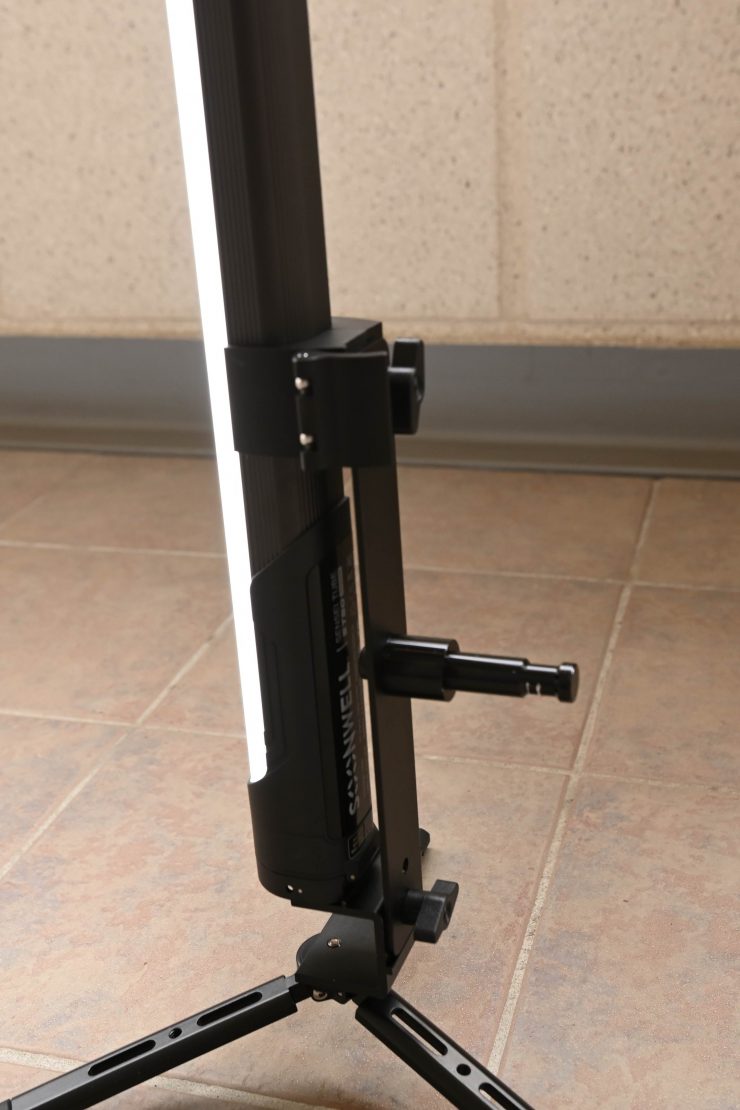
The mains power input is at the bottom and you can’t access it! 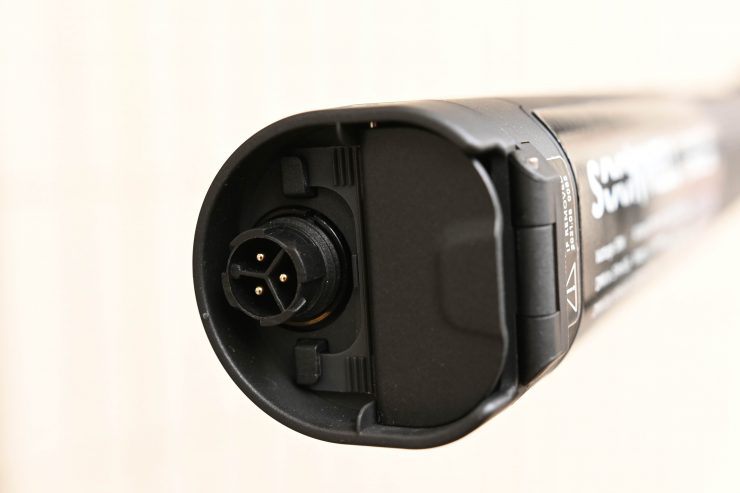
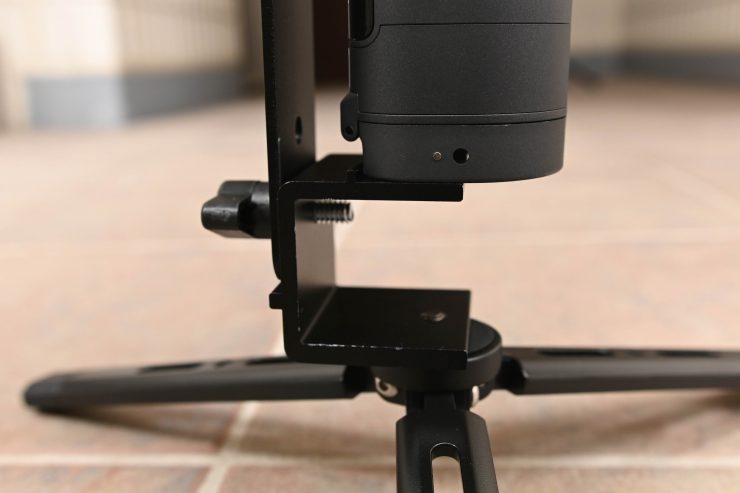
A major red flag with the design of this light is that if you mount it horizontally using the provided mounting solution and you want to run it from mains power then the controls end up getting covered up and you cant access them. The mains power input is on the opposite end to where the controls are located.
Silent Operation

The Sensei ST50 doesn’t feature any type of fan and it is passively cooled. While this does prevent any unwanted noise, it does mean that the light gets quite hot. The other downside of not using any type of fan is that the output is going to be limited.
Mounting
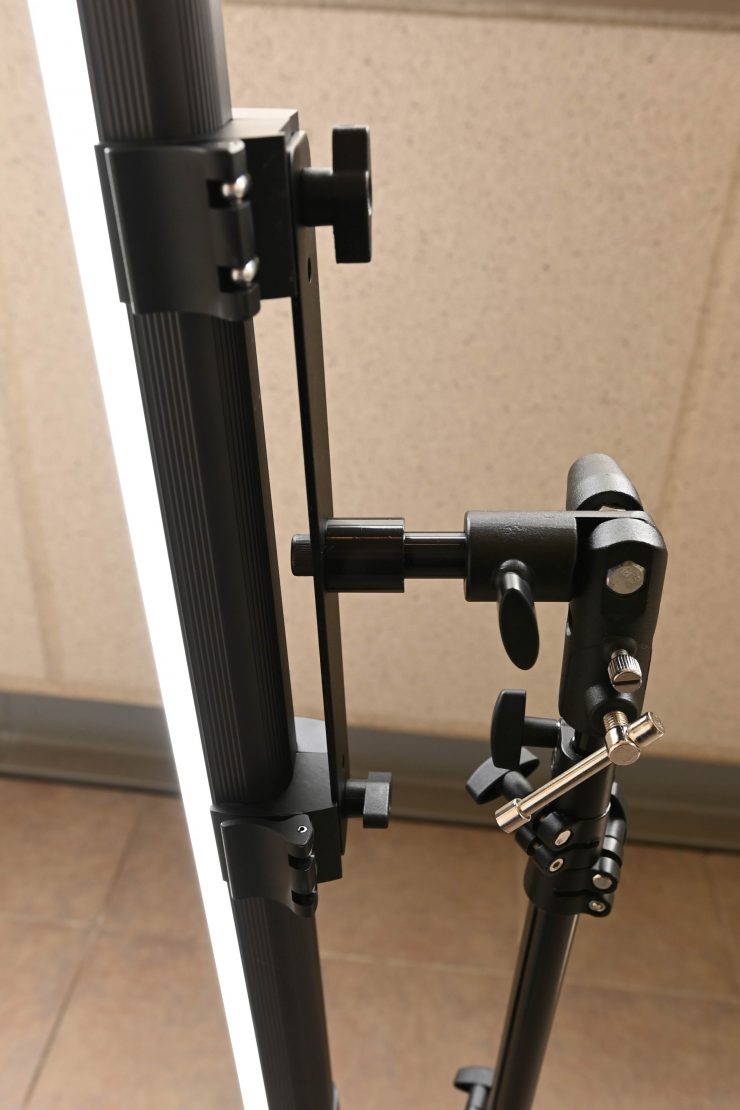
Mounting tube lights is always a little tricky. As I mentioned earlier in the review, the ST50 doesn’t feature any 1/4-20″ or 3/8″ mounting point points. This means you have to use additional mounting components.
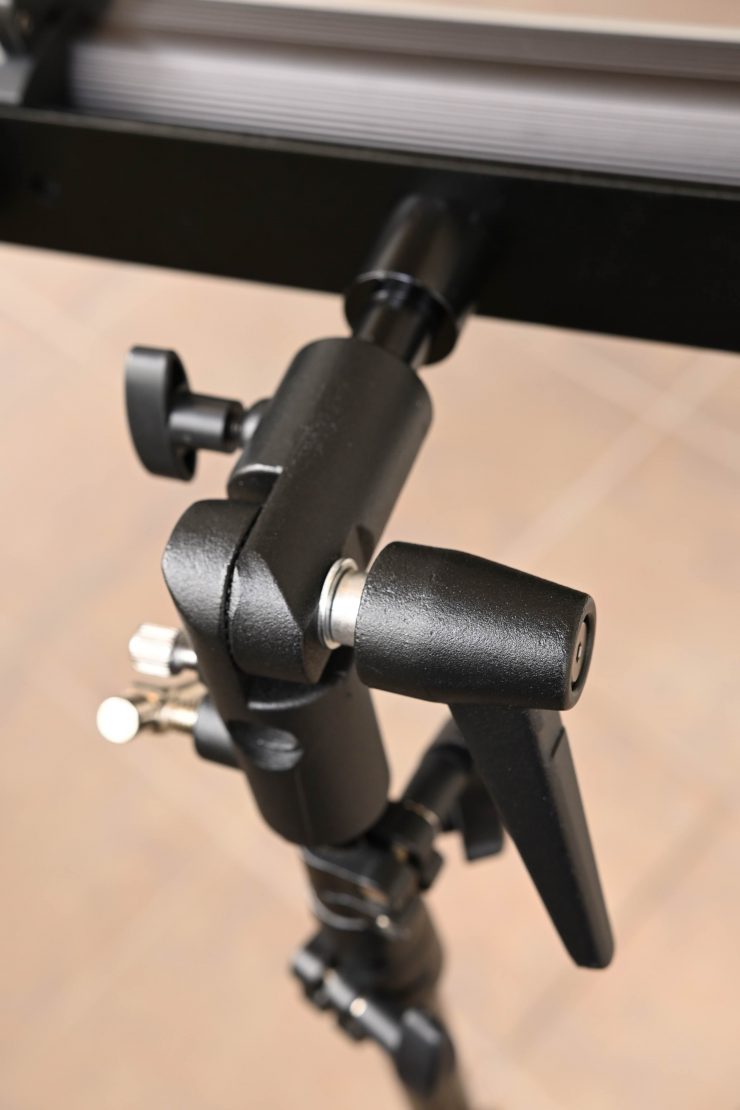
SOONWELL does give you quite a few mounting accessories with the ST50, but I found some of them to be overly complicated and time-consuming to set up and use.
The kit also included two mounting brackets which are very similar to what you will find being used by other manufacturers of tube lights.
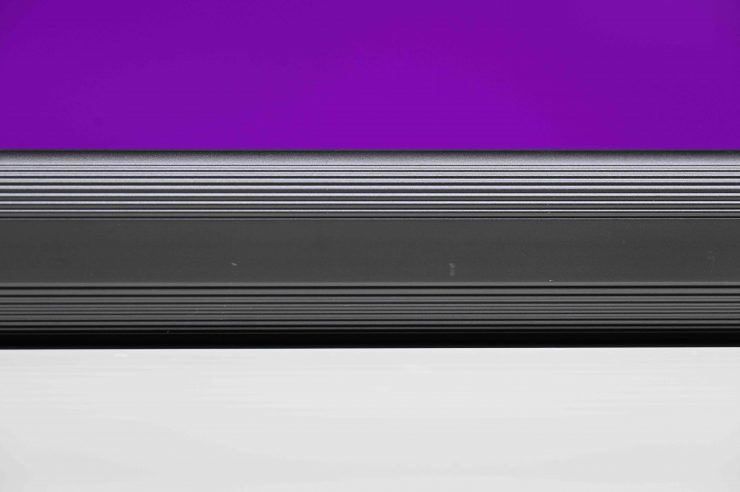
These brackets are made out of some type of metal, and while they are robust, they end up scratching the back of your tube light.

The issue I had with one of the mounting brackets is that it locked down so tightly that I had a very hard time undoing it to take the light out. I eventually had to use a pair of pliers to open the locking mechanism. Again, the attention to detail is nowhere to be found.
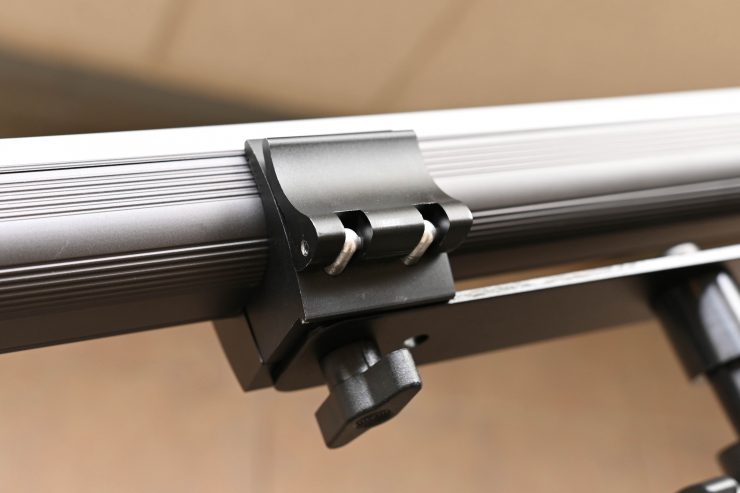
On the back of the brackets, there is a single 1/4-20″ mounting point.

Now, unlike a lot of other tube lights, the Sensei Tubes don’t have mounting points on the bottom of the light as I just mentioned. This means you can’t just attach the included mini tripod or a small stand that you may already have.
Instead, you need to build this overly complicated rigging solution by using the two included mounting brackets and then attach the included mini tripod to that mounting bracket. Despite making this large mounting solution, the light does not feel very secure when you mount it vertically. As I mentioned earlier in the review if you want to run the light via mains power in this configuration and have access to the onboard controls good luck!
For mounting the ST50 to a light stand or grip equipment you can either use that same bracket which you then attach to the included adjustable light stand mount.
You can also just attach the light with a single mounting bracket to a spigot and then mount it to something else.
SOONWELL also gives you a few ties that you can thread through the ends of the light if you want to hang it up somewhere.
My advice would be to just construct the included mounting components and leave them in the bag like that. You don’t want to have to construct this up every time you pull out the light.
Photometrics
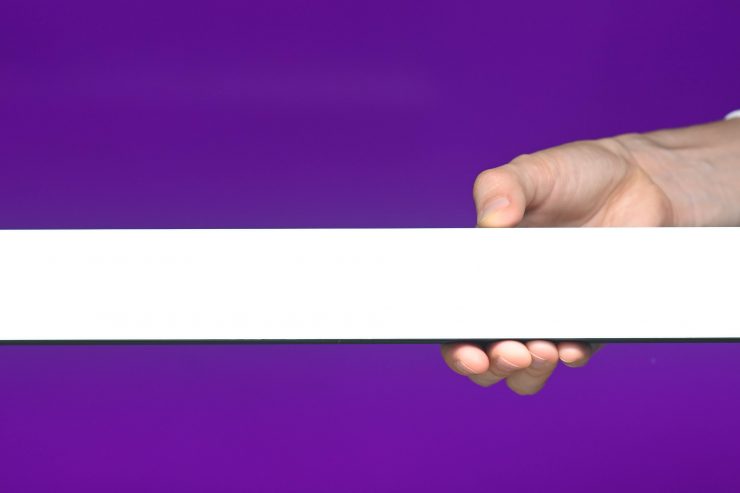
So now let’s get to the photometric results. I always test lights in this way so that I get a reference to how they compare to other fixtures. Results only tell part of the story and should never be used alone to judge a light. I have found from extensive testing over the years that certain lights that have good photometric results don’t always look good, and lights that have worse photometric scores can sometimes look better than their results indicate.
You need to look at all of the photometric results to get an accurate assessment of a light, looking at just one set of results is like reading one chapter in a book and skipping the rest.
Different lights can also look different depending on what camera you happen to be using.
Output & Color Temperature Accuracy
I tested the ST50 at a variety of Kelvin color temperatures with a Sekonic C-800 Spectrometer to find out how much output the light had and how accurate the Kelvin color temperature reproduction was. All readings are taken at a distance of 1m (3.28ft) in a controlled environment.
Now, SOONWELL claims that the ST50 is capable of outputting 1030lx (95.7 fc) at a distance of 1m when used at 5600K. let’s see if that is true.
5600K
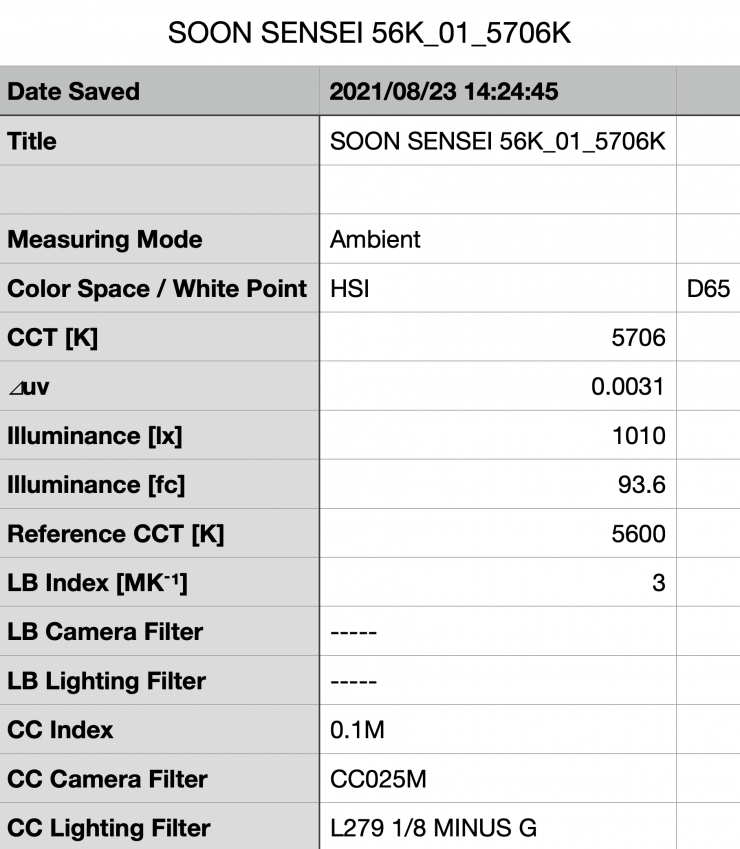
Above you can see the ST50 recorded an output of 1010 lx (93.6 fc) when set at 5600K. This is a reasonable amount of output for a single tube light, although it is not overly bright for a fixture of this size.
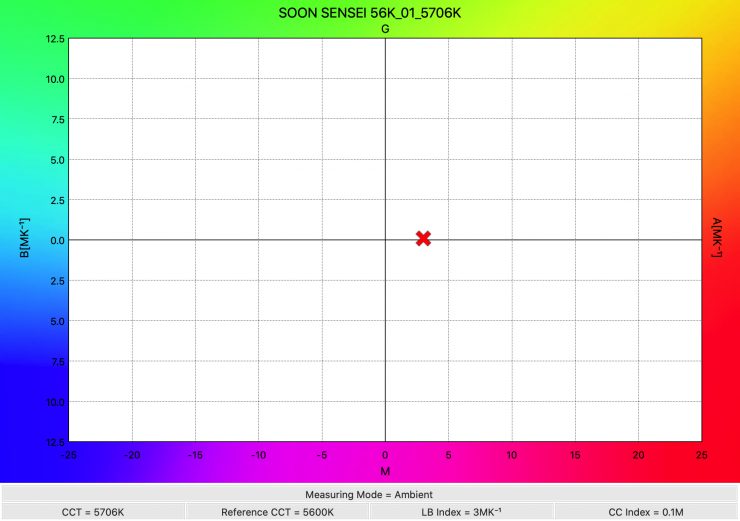
The fixture produced a Kelvin color temperature of 5706K. The Kelvin color temperature it produced was ok, although not great for a 5600K source.
3200K
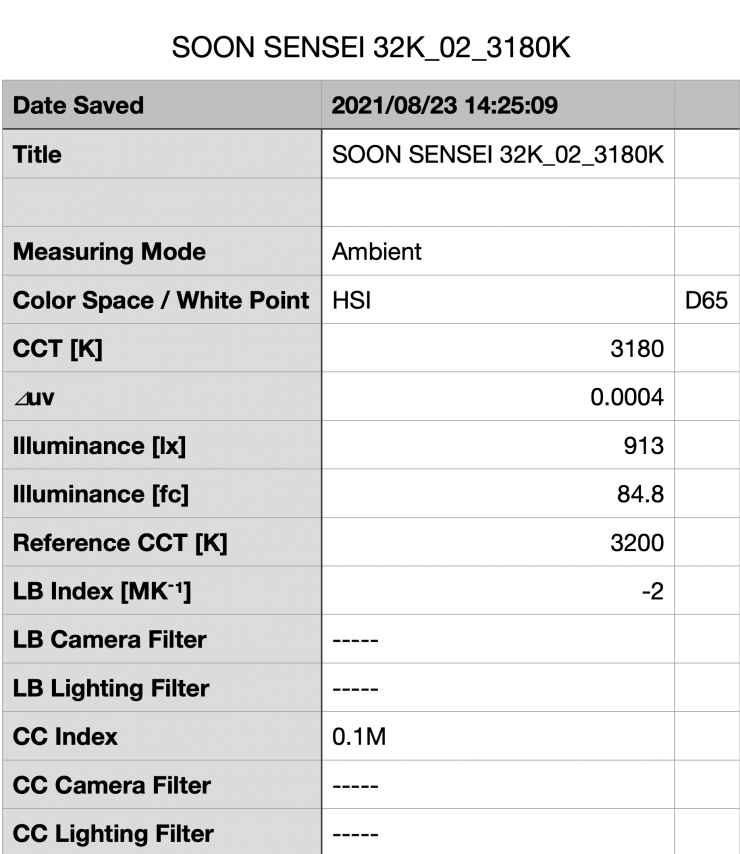
Above you can see the lights output when it was set at 3200K. It produced 913 lx (84.8 fc), which was 9.6% less than the 1010 lx it produced at 5600K.
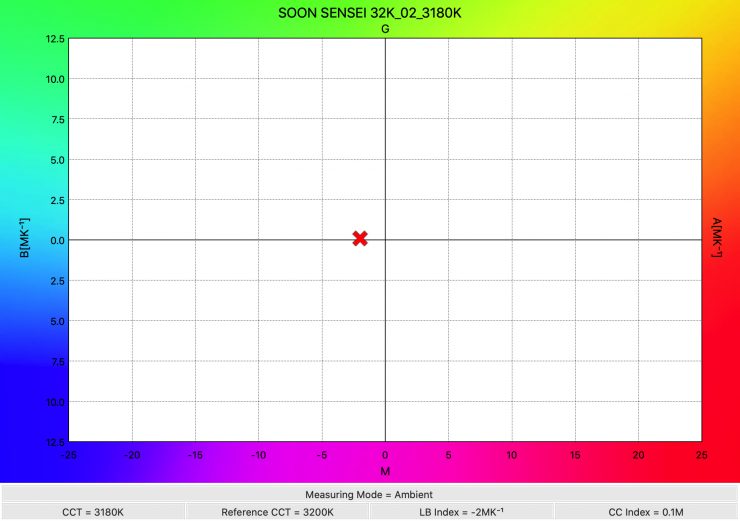
As far as Kelvin color temperature accuracy goes, it recorded a very accurate reading of 3180K.
So how does it perform at various Kelvin color temperatures when it comes to output and Kelvin color temperatures? Well, below you can see.
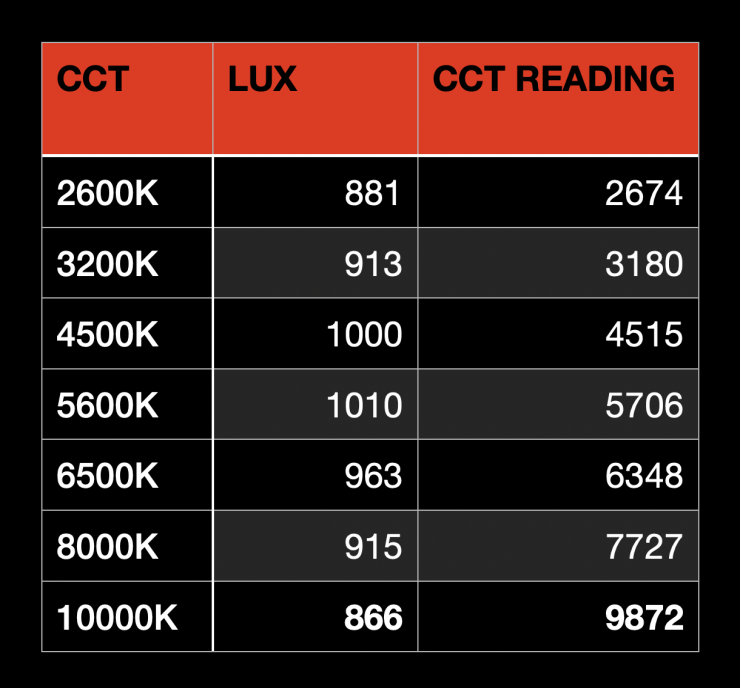
These results tell me that the light retains very good Kelvin color temperature accuracy at 4500K and below. At 560K and above it is still reasonably good, but not as good as it is at 4500K and below.
The output of the light is very consistent regardless of what Kelvin color temperature you set. The output only varies by 12.7% from the highest to lowest scores that I recorded.
HSI
I also wanted to see how much output the Sensei ST50 can produce in its HSI mode when created a fully saturated Red.
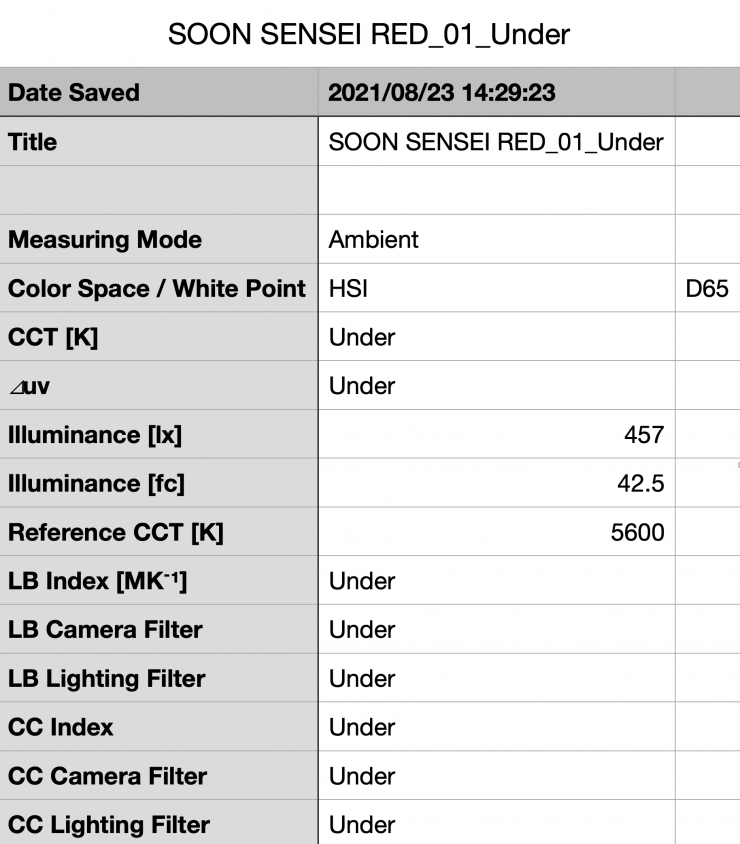
Above you can see that the light produced 457lx (42.5fc) when set to produce a fully saturated Red. This tells me that the output when generating a saturated color is about half of that of when you are using the light in the CCT mode.
How linear is the output?
I wanted to see how linear the dimming curve was when using the Sensei ST50. I tested the light at 5600K at 100/75/50/25 and 10%.
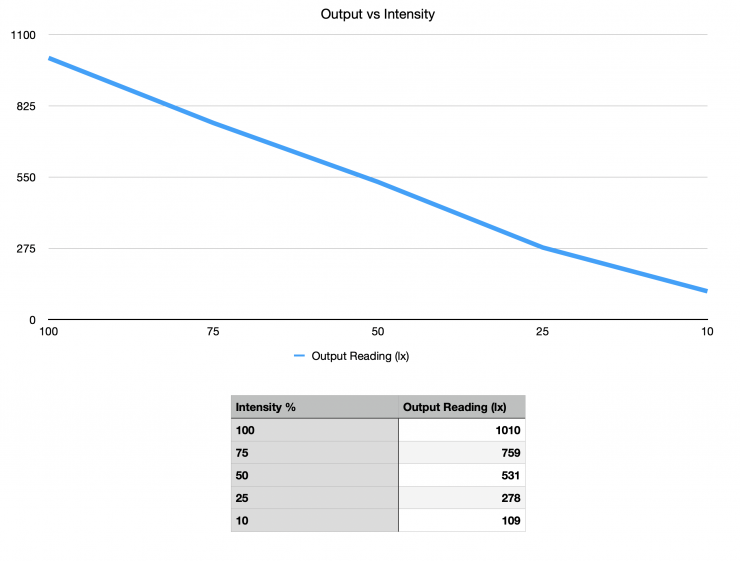
As you can see, the light’s output is very linear once you start dimming it down. At 50% output, it has 47.4% less output than when it is used at 100%. At 25% output, it has 72.4% less output than when it is used at 100%.
Does the Kelvin Color Temperature change once you start dimming the light down?
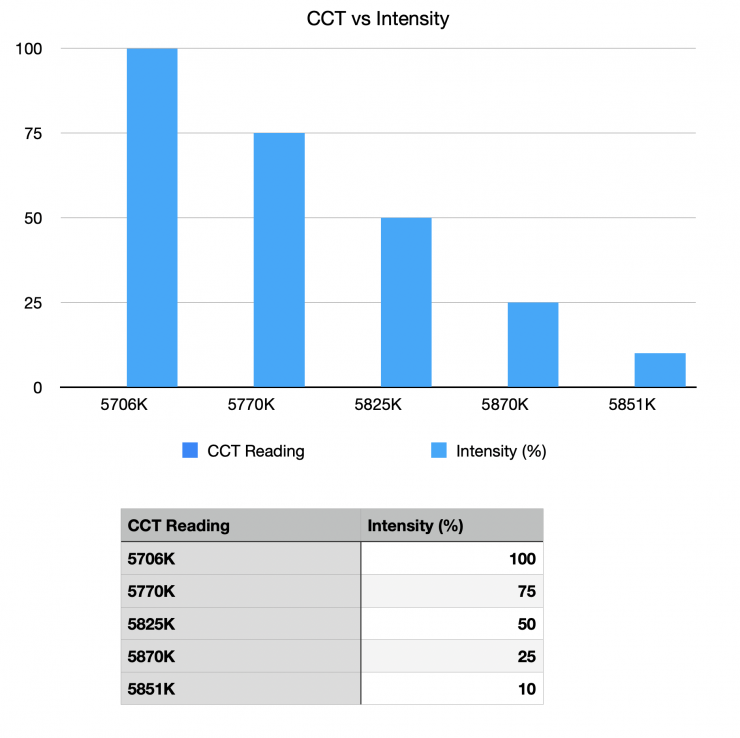
Above you can see that the Kelvin color temperature does change once you start dimming the light down, but not by a significantly large amount. The light’s Kelvin color temperature only varies by 145K from 100% output to 10% output.
Color Rendering
So now that we have seen how much output the ST50 produces, how does it perform when it comes to replicating accurate colors.? Well, let’s find out.
SOONWELL claims that the ST50 has a CRI of 96+ and a TLCI of 97+. Let’s see if that is true. CRI and TLCI are not the best way to judge color accuracy with LED lights, but I still do these tests because I have done for every light we have reviewed on Newsshooter and they provide a reference for how they compare to older lights that were only tested with a Sekonic C-700.
5600K
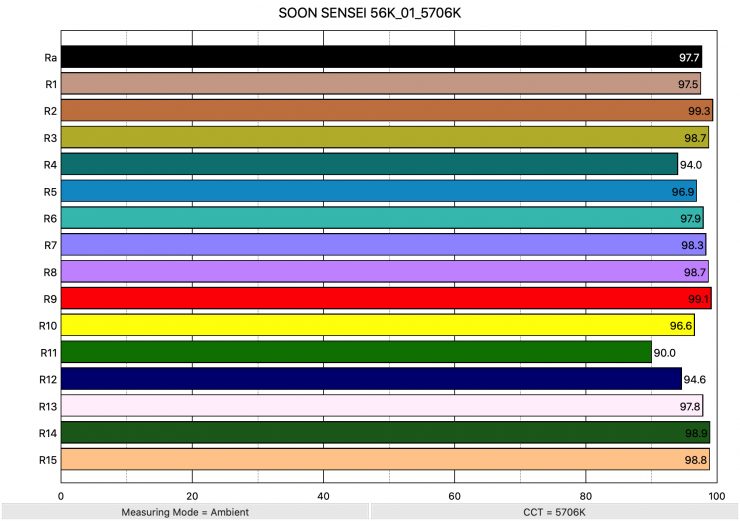
Above you can see that when the light was set at 5600K it recorded an average CRI (R1-R8) of 97.7 and an extended CRI (R1-R15) of 97.14. For replicating accurate skin tones it recorded 99.1 for R9 (red), 97.8 for R13 (closest to caucasian skin tones), and 98.8 for R15 (closest to Asian skin tones). These results were excellent results.
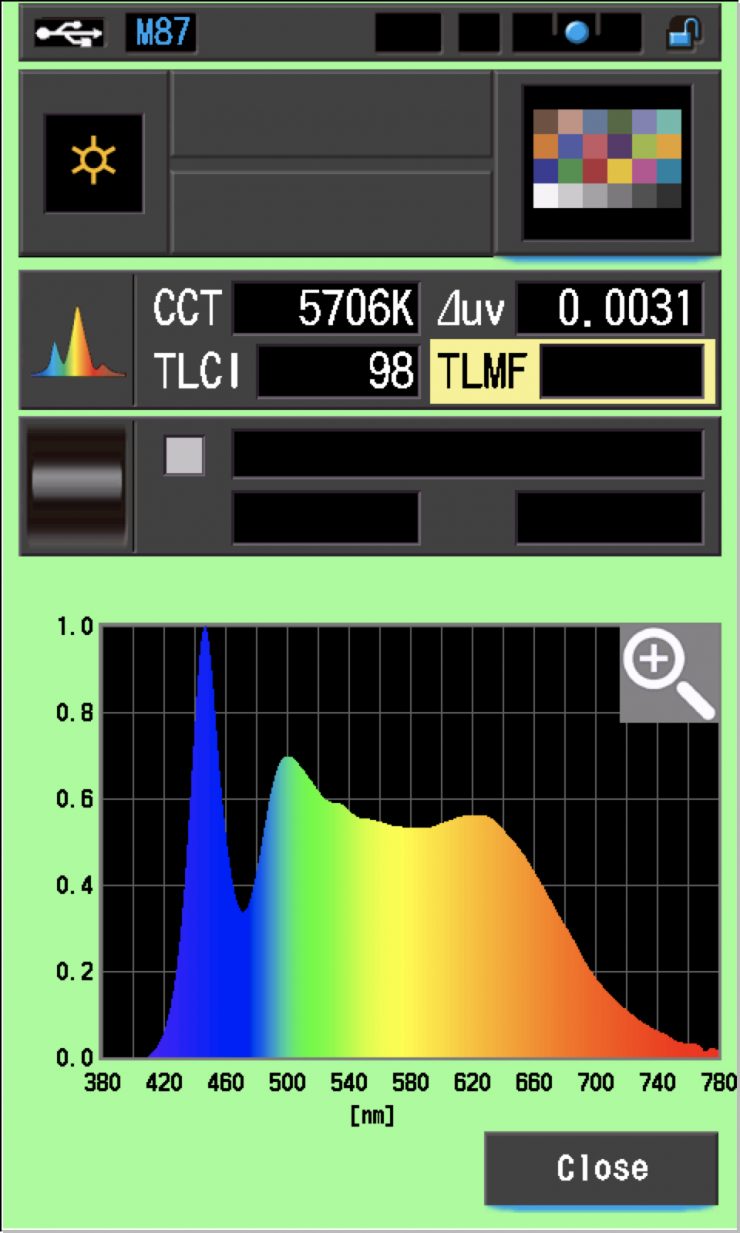
The light when set at 5600K also recorded a TLCI score of 98.
3200K
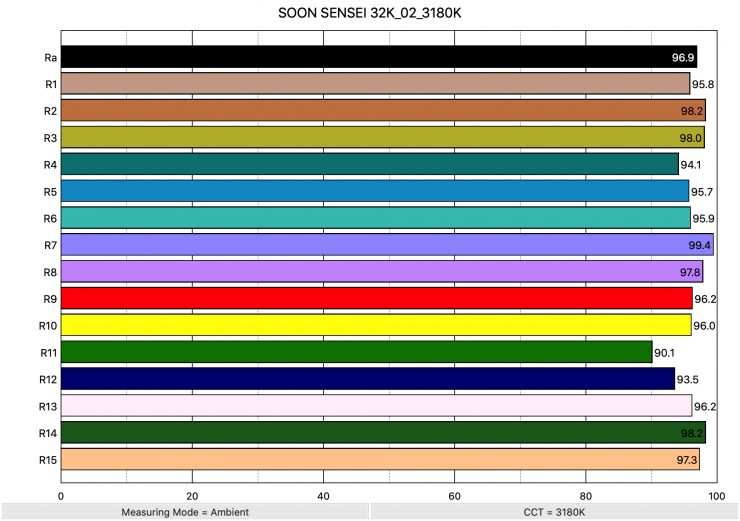
Above you can see the scores for when the light was used at 3200K. It recorded an average CRI (R1-R8) of 96.9 and an extended CRI (R1-R15) of 96.16. For replicating accurate skin tones it recorded 96.2 for R9 (red), 96.2 for R13 (closest to caucasian skin tones), and 97.3 for R15 (closest to Asian skin tones).
Just like at 5600K these results were excellent.
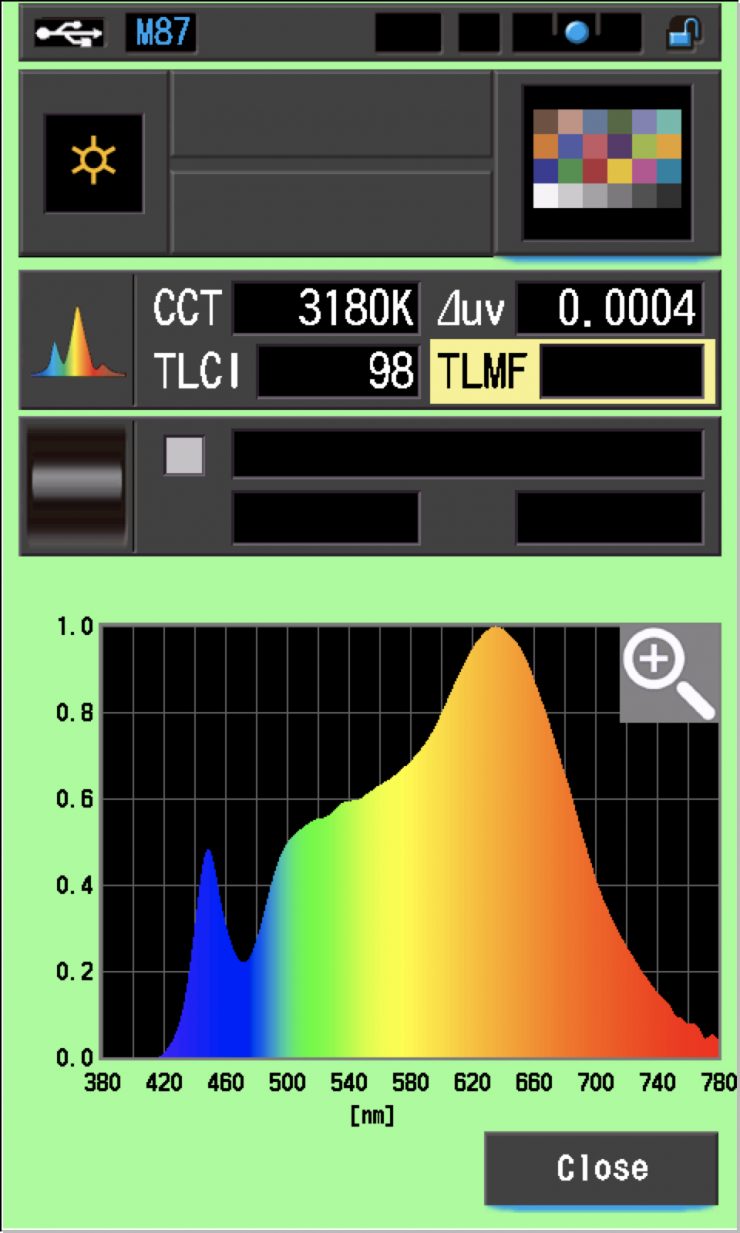
The light, when set at 3200K, recorded a TLCI score of 98.
CC Index & ⊿uv
The CC Index displays the CC correction value and whether any magenta or green need to be added or subtracted. 1 CC corresponds to 035 Kodak CC values or 1/8 Rosco filter values. Any reading less than +1.00 or -1.00 and you’re probably not going to need to make any kind of adjustment. The ⊿uv is the value to show how much this light is away from being an ideal light source (black body radiation = incandescent lamp). As with the CC Index you want this number to theoretically be zero. Kelvin is not a linear value, so we need to convert from Kelvin to MK-1 to compare the values of color temperature. To calculate from Kelvin to Mired is MK-1= 1*1000000/Kelvin. While this may sound confusing, it is the only way of measuring if the Kelvin shift is significant enough to warrant having to use a filter for correction. Below are the results for the light:
Kelvin Vs MK-1
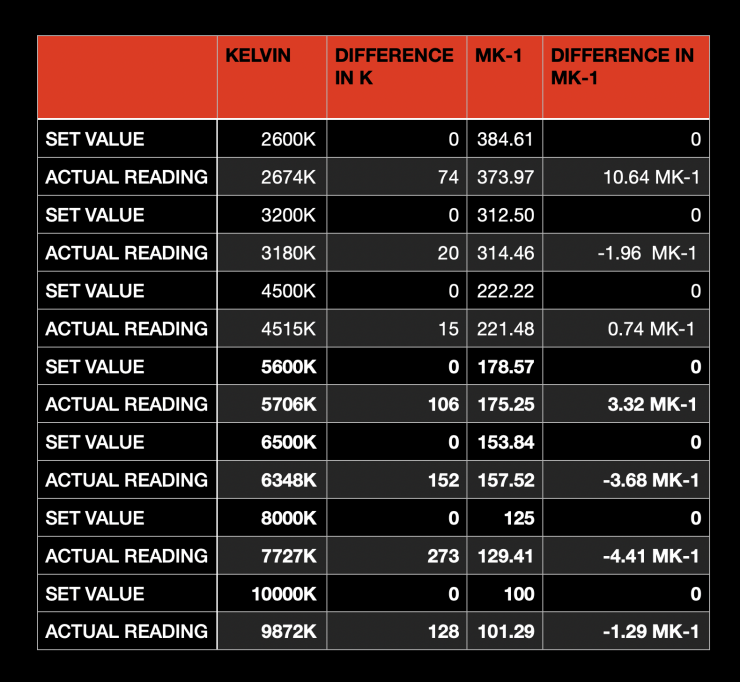
These figures might look confusing, but what it tells me is that the light is extremely accurate across its Kelvin color temperature range, except for at 2600K. Any MK-1 score that is under -9/9 means you wouldn’t have to use any color correction gels. Any score that is -/+ 6 MK-1 is considered to be excellent. Again, we don’t want to judge a light based on one set of scores.
CC INDEX & ⊿uv
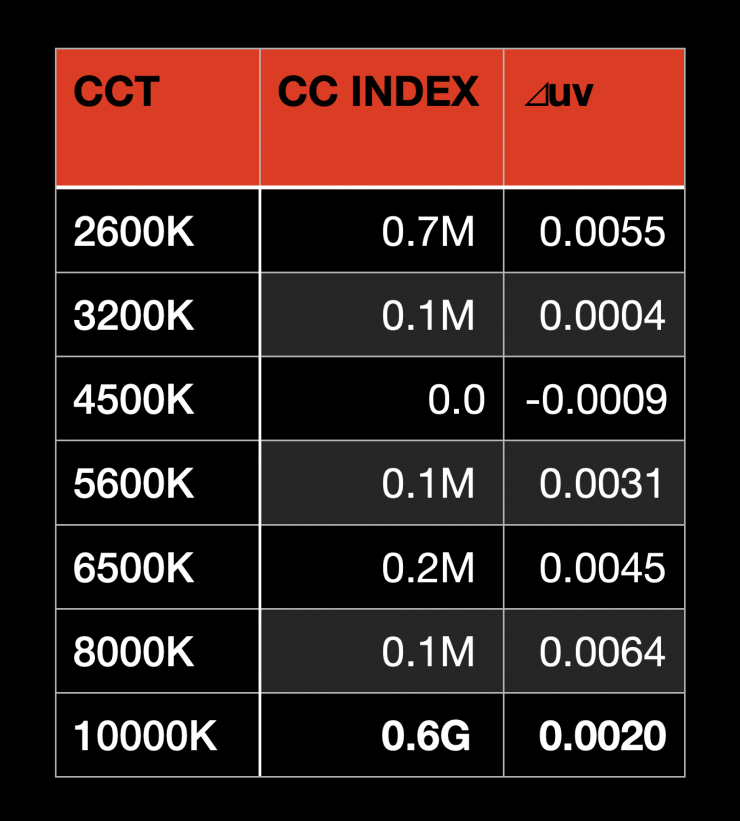
These are reasonable scores, but the light is certainly better when it is used at 3200K or 4500K.
TM-30
TM-30 is a relatively new color rendering standard that was developed to deal with the limitations of CRI. TM-30 looks at 99 individual colors. These 99 colors are categorized into seven groups: nature, skin color, textiles, paints, plastics, printed material, and color systems.
TM-30 scores go from 0 – 100. The higher the score, the more accurate a light is at producing colors. Any TM-30 Rf score in the ’90s is considered to be good. What is interesting and something that you need to be very aware of is that two separate light sources with the exact same CRI scores can render colors very differently. A light with a high CRI rating could have a low TM-30 score. Conversely, a light with a good TM-30 score could have a bad CRI score.
Now, there are two measurements associated with TM-30, Rf and Rg.
Rf (Color Fidelity)
Rg (Color Gamut)
With Rf value, ideally, you want a score in the 90’s.
With Rg value, a score below 100 indicates that the light source renders colors with less saturation than the reference source. So ideally you want this score to be above 100.
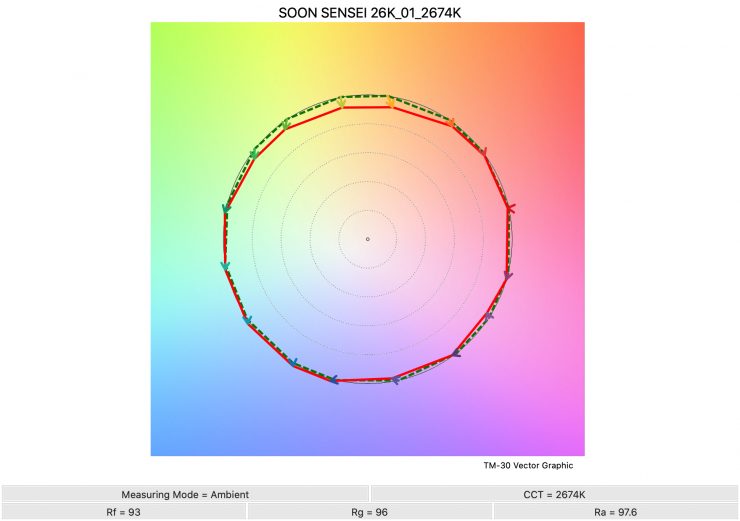
2700K 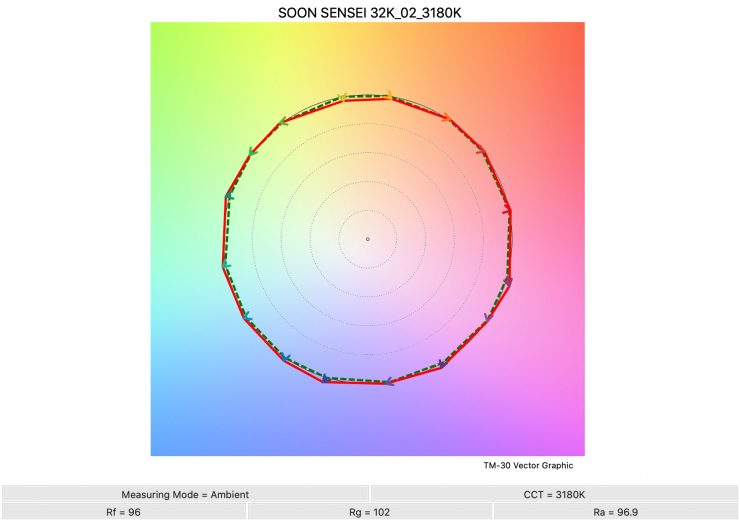
3200K 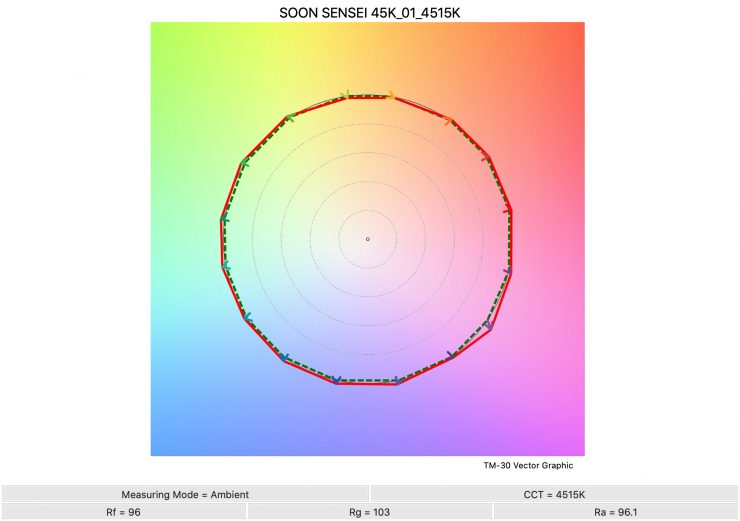
4500K 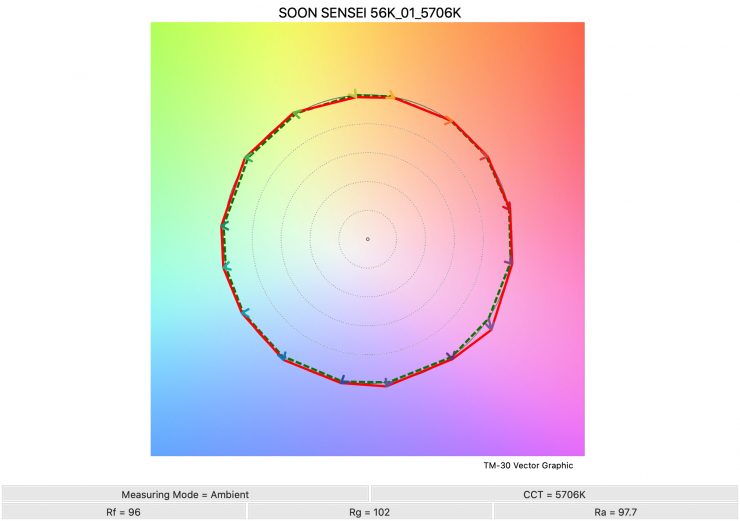
5600K 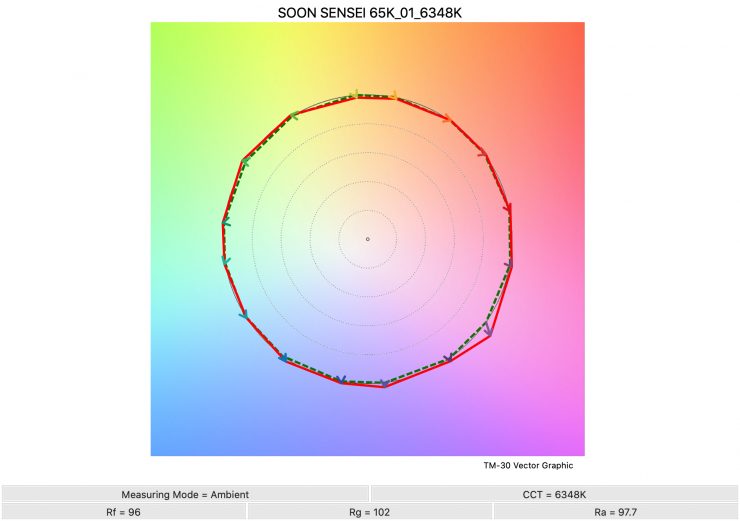
6500K 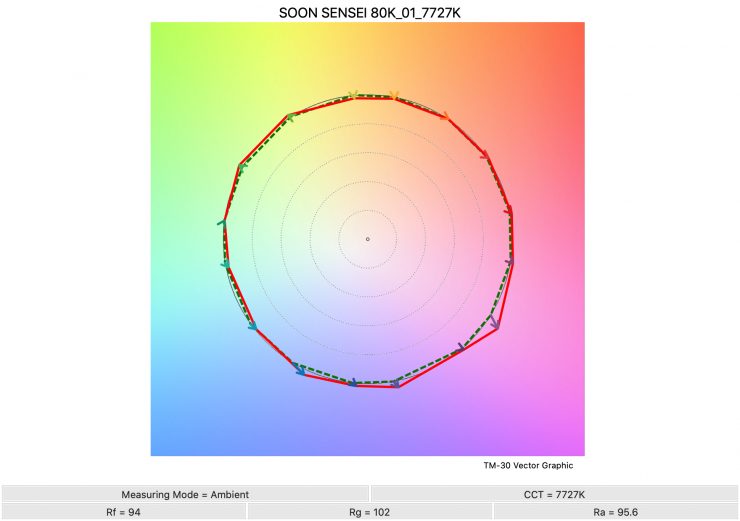
8000K 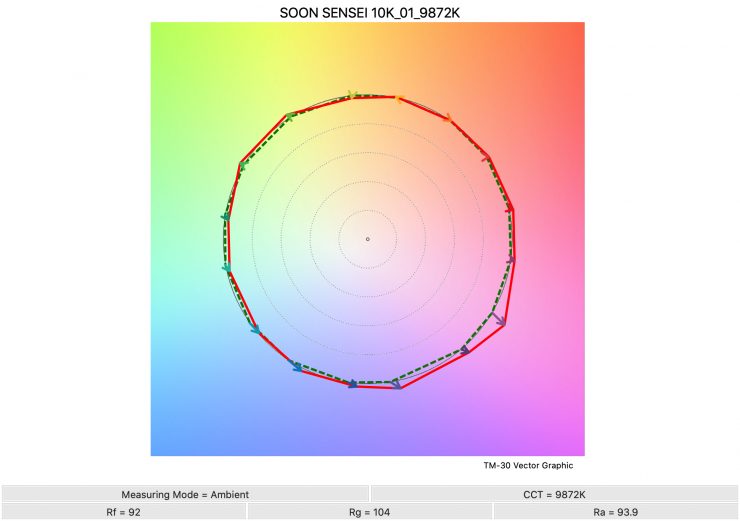
10000K
Above you can see the scores for the Sensei ST50 at various Kelvin color temperatures. Below I have listed the figures as well.
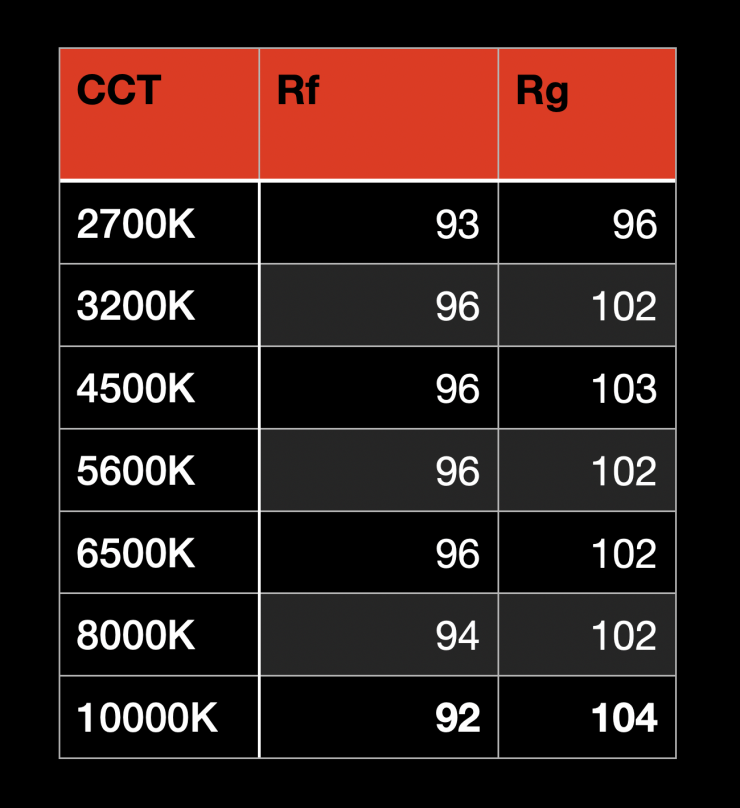
The TM-30 scores are all good (except at 2600K) and it shows me that the light is pretty consistent at replicating accurate colors with full saturation.

If we look at how well the light replicates a fully saturated Red, you can see above that it does a good job, however, the Hue did shift by 1-degree.
SSI
SSI (Spectral Similarity Index) was developed by the Sci-Tech Council of the Academy. SSI gives me the ability to set any light as a standard, or use predefined standards (such as CIE D55), and then give other lights an SSI score based upon how well they will match standards such as CIE D55 measure spectral response and compare it directly against an ideal light source.
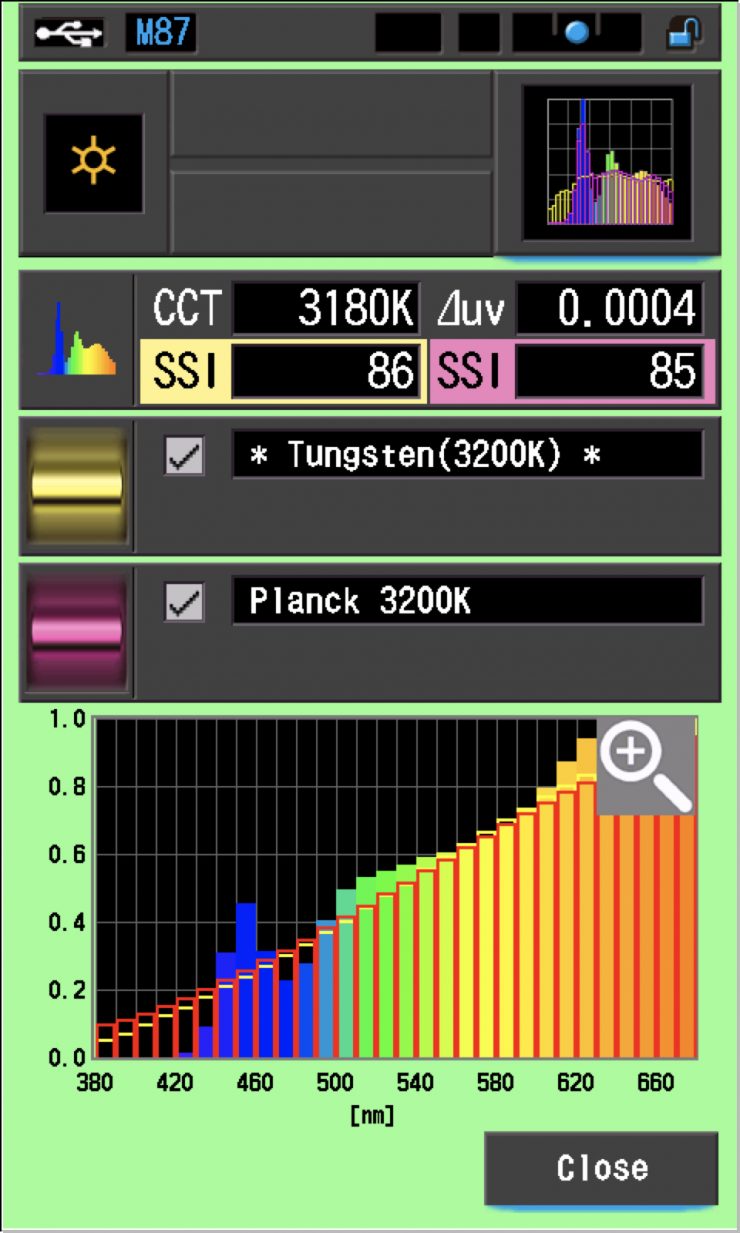
In this graph, the red bars indicate a perfect 3200 (Tungsten source. The Red bars indicate a Planck 3200K source. This lets us compare how close to a perfect 3200K lighting source the ST50 is. A score in the mid ’80s is very good for a LED light trying to replicate a 3200K source.
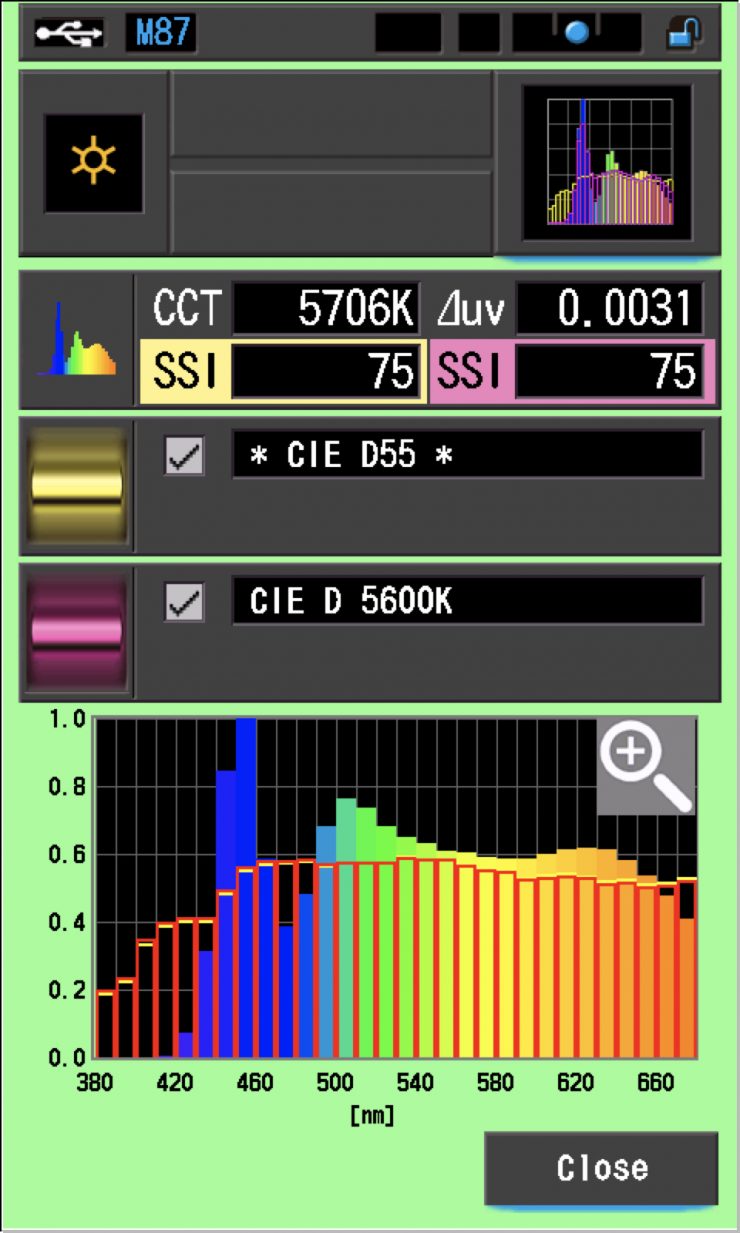
In the graph above, the red bars indicate a perfect CIE D 5600K source. The Red bars indicate a perfect CIE D55 source. This lets us compare how close to a perfect 5600K lighting source the ST50 is.
Most LED lights only record SSI scores in the 70s when they are used at 5600K.
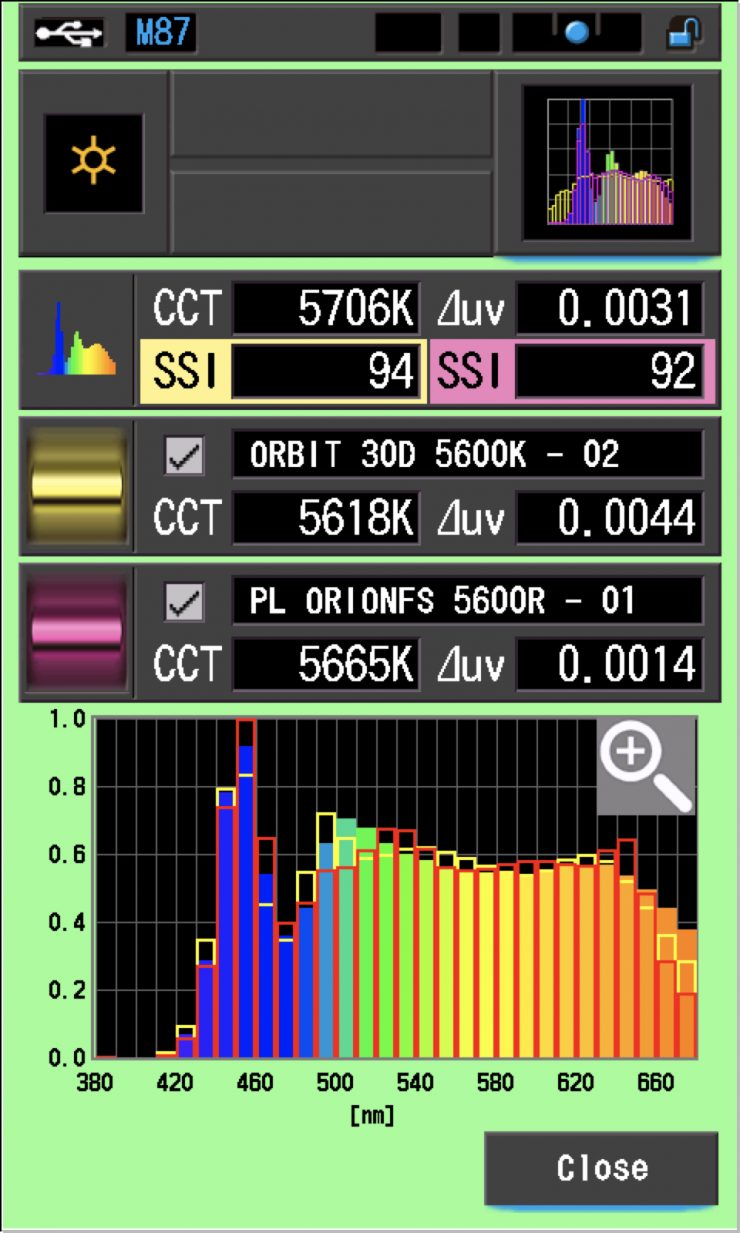
The main reason we want to record SSI scores is so we can see how well they match with other lights. As an example, let’s see how well the SOONWELL matches the ARRI Orbiter and Prolychyt Orion 300 FS when used at 5600K. As you can see, the SOONWELL is actually a pretty close match to both lights. In a perfect world, you would want the lights you are using to have a score of 100 if they were all being used at the same Kelvin color temperature. That is rarely ever going to be the case unless you are using the exact same lights from the same manufacturer, however, any score in the 90s should in theory provide a very decent match.
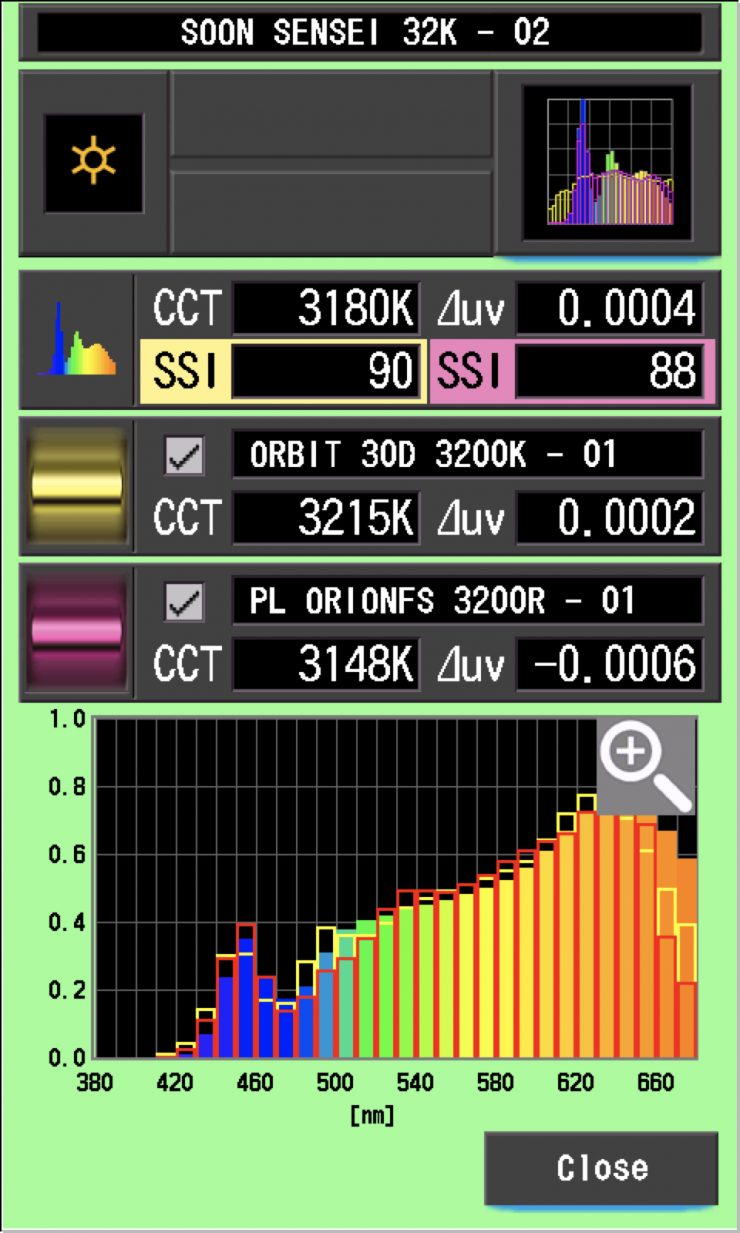
Just as another comparison, above you can see how all of those same lights match when used at 3200K. As you can see, the SOONWELL still matches the ARRI and the Prolychy reasonably well.
Spectral Distribution
5600K
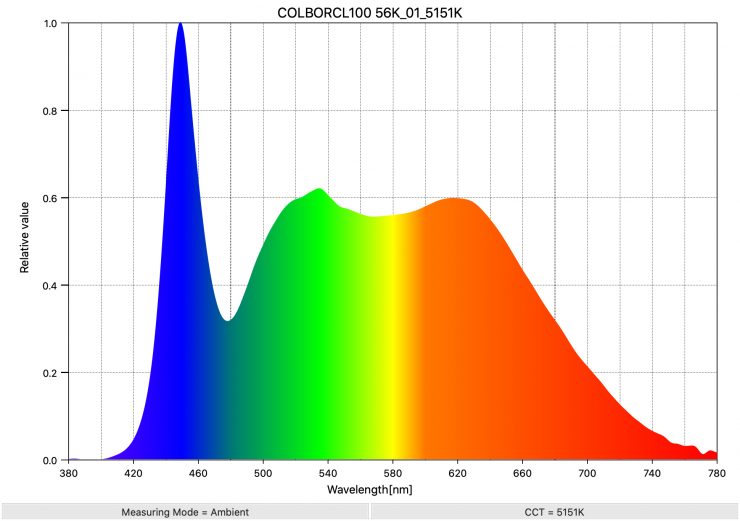
Above you can see the spectral distribution of the Sensei ST50 when it is set at 5600K. The spectral distribution is pretty good and there are no big spikes.
3200K
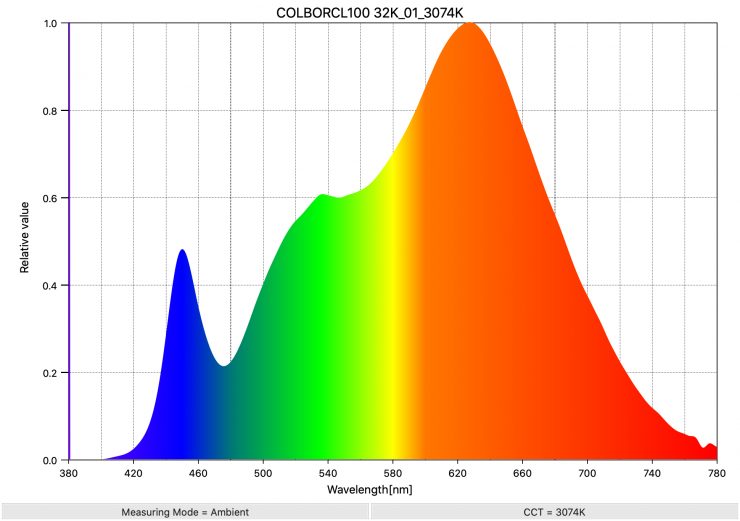
Above you can see the spectral distribution of the ST50 when it is set at 3200K. The spectral distribution is pretty good for a LED light being used at 3200K.
Real-World Performance & Quality of Light
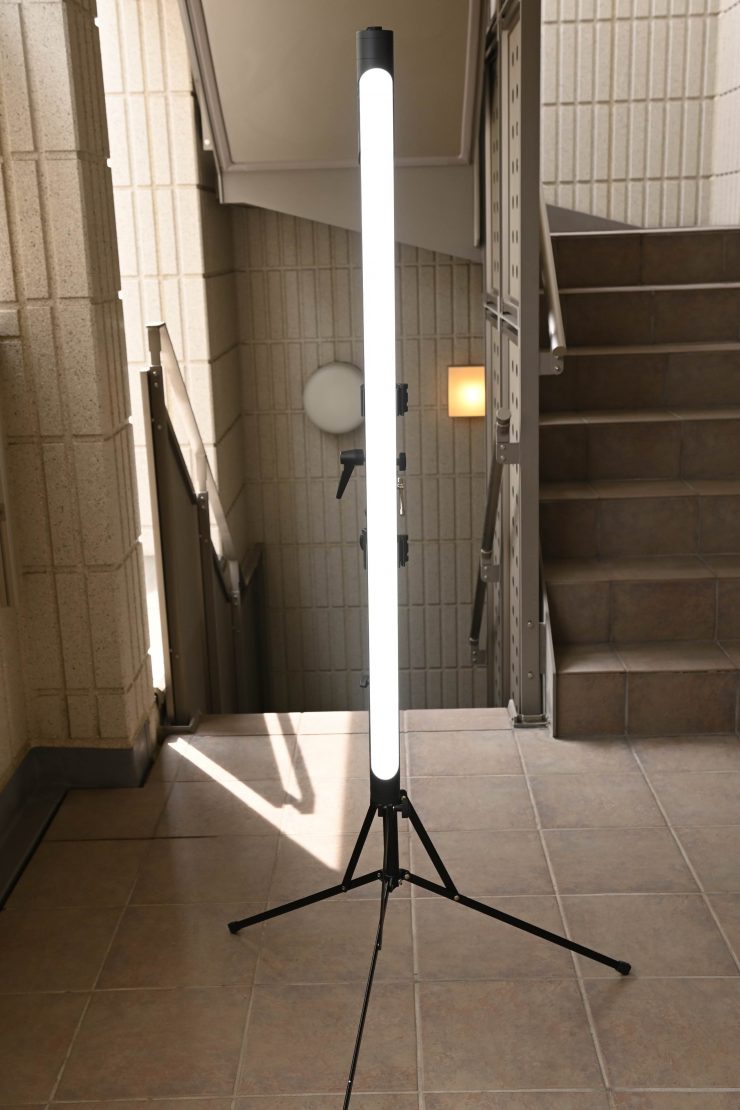
I might sound like a broken record, but as I always say in lighting reviews, photometric scores only tell you part of the story. LED lighting technology has gotten to a point where almost all of the lights that are being released score well in photometric tests. What you should be focussing on, and this goes for just about any product, is usability. How will this product fit into the way I like to work.
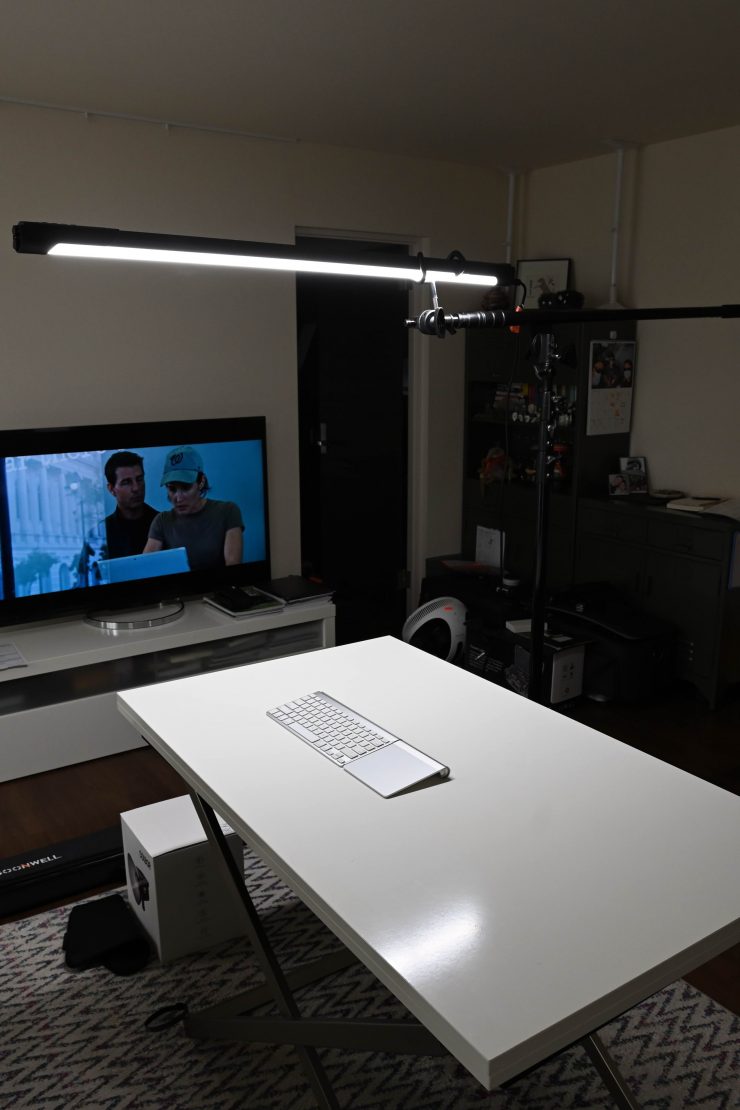
The ST50 could use the light for lots of different applications. Tube lights such as this are fairly versatile and can be used as ascent lights, interview lights, replacements for practicals, etc, etc.
First the good point. The light is very good at replicating accurate colors, especially when used at 3200K and 4500K.
Now for the bad. The attention to detail is sorely lacking on this fixture. I cannot understand why the screen is upside down in relation to the onboard controls. The screen also flickers when the light is hooked up to mains power.
The included mounting bracket system works, but it is overly complicated and not that well thought out. I also found that one of the mounting brackets was very hard to release once it was clamped down.
Yes, I would have liked to have seen a slightly longer run time when using the battery, but on the other hand, you get a product that you can just pull out and turn on. I don’t like the implementation of how you charge the removable battery and I don’t understand why you can’t turn the light off when it is hooked up to mains power. Also, I am not sure why most lighting manufacturers can’t make D-tap power adapters so you could run these lights from camera batteries.
I might be sounding a little over-critical in this review, but there are definitely things with this light that really annoyed me. I just want to make you very aware of what you get with these lights.
As far as output is concerned, the light isn’t overly bright, but for a lot of scenarios where it will be used as a practical or placed in shot on purpose, it doesn’t need to be too bright.
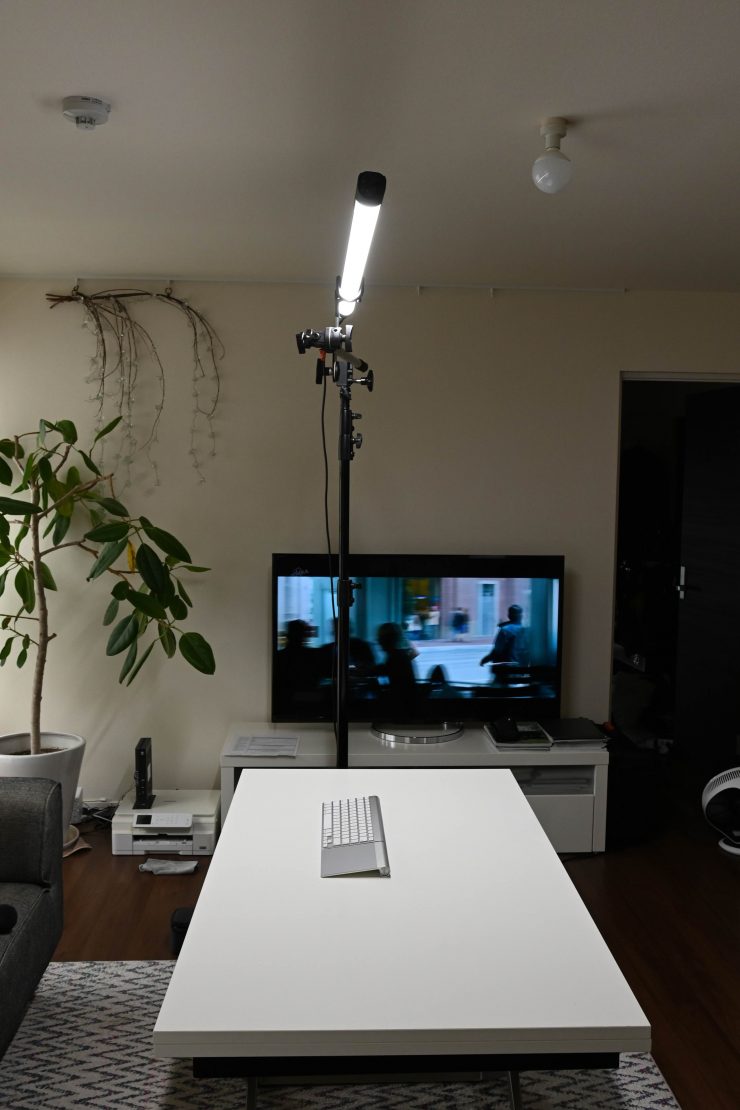
Light on 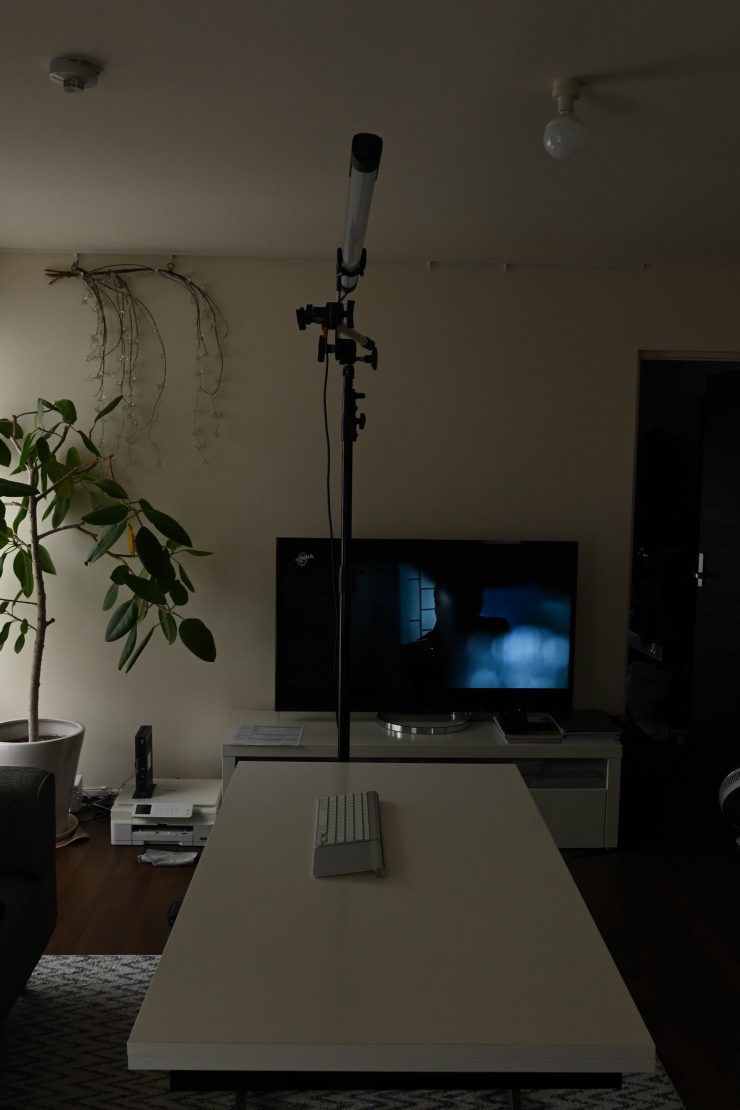
Light off 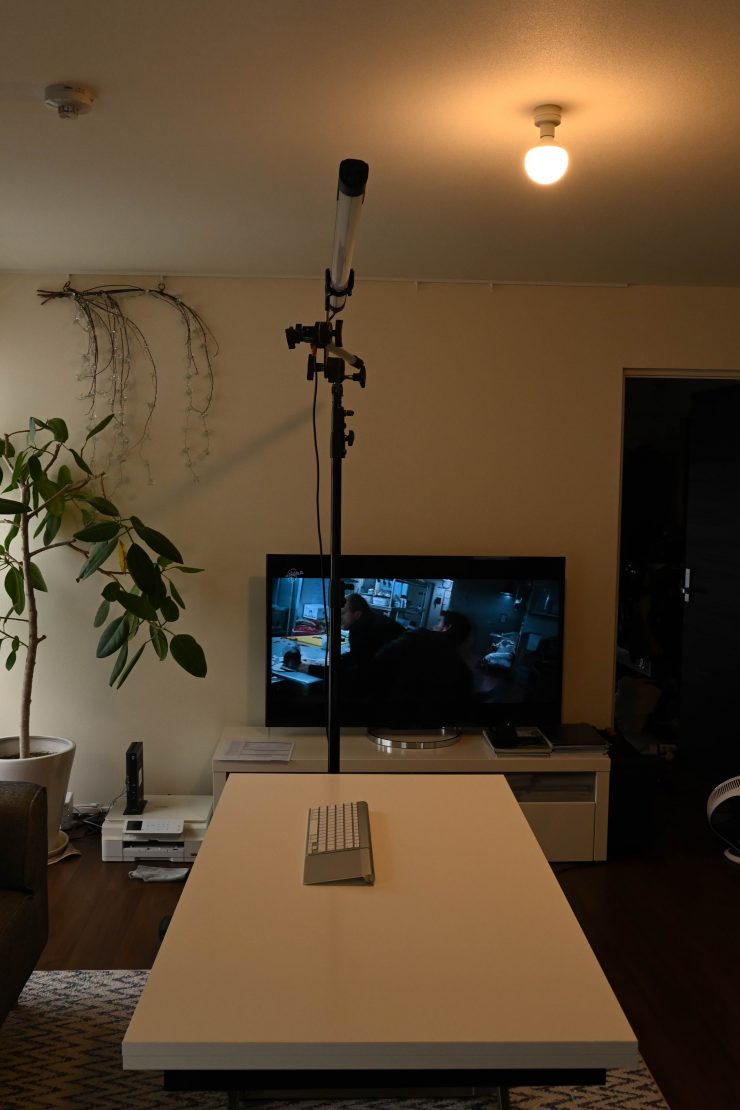
Practical in the room on
Above you can see what it looks like if you want to create an overhead lighting solution. As most tube lights have quite a broad beam spread they can be used to replicate practicals.
If you put the light up really high it does work well to add some extra illumination to a room and it often will give you a lot nicer light source than when using an existing practical.
If you wanted to use this tube light as a key light in an interview you could, but you do have to be mindful that it will only probably work well in controlled environments.
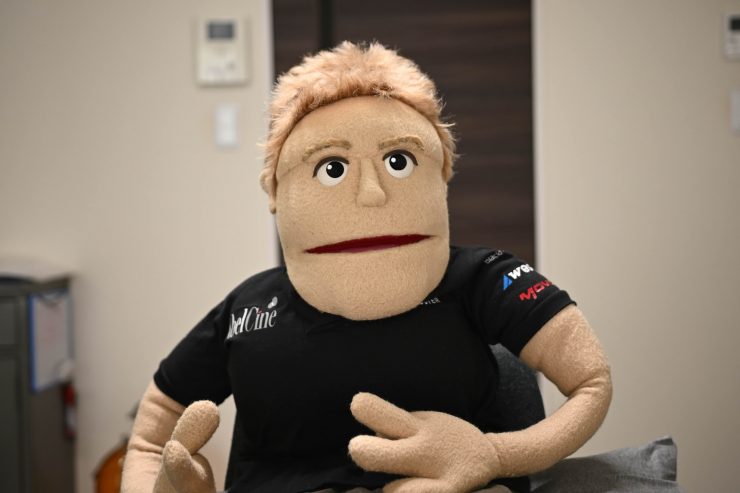
Tube lights also make pretty good hair or backlights. Yes, that is a puppet!
Above you can see a couple of example frames where I am just using the Soonwell to create a couple of very simple looks in a background. Having a light like this with a built-in battery makes using the light like this really quick.
For me personally, a tube light is probably not something that I would tend to use that often. While it is reasonably versatile, the physical size and difficulty of transportation probably outweigh its benefits for the style of work I do. However, if you are shooting music videos or other content where you need a light to be able to create colors or effects that can be discreetly placed in a scene then this might be a good option for you.
Price & Availability
The lights range in price from $509 USD to $800 USD. Below are the prices:
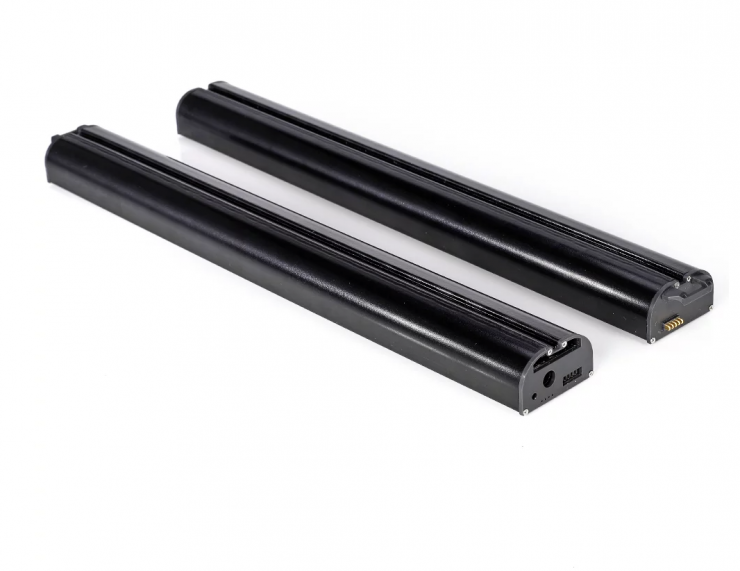
Additional batteries are $79 USD.
Competition
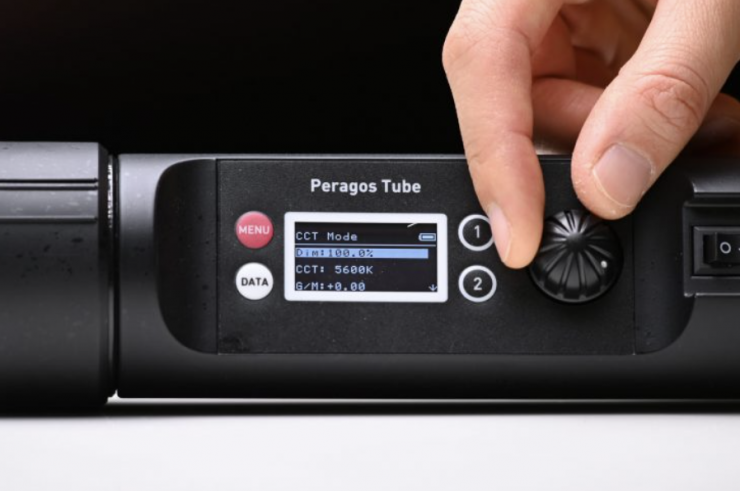
The main competition comes in the form of lights such as the Digital Sputnik Voyager (4′), which costs $690 USD, the Astera TitanTube Power Kit ($850 USD), Came-TV Boltzen Andromeda Slim Tube LED Light 4FT ($348 USD), Vibesta Peragos 120C Pixel $549 USD, and the Nanlite PavoTube 30C 4′ RGBW LED Tube with Internal Battery $349 USD
The Astera Titan Tubes are perhaps the most well-known and widely used. They have a host of features and the ability to be run off internal batteries for up to 20 hours.
Conclusion
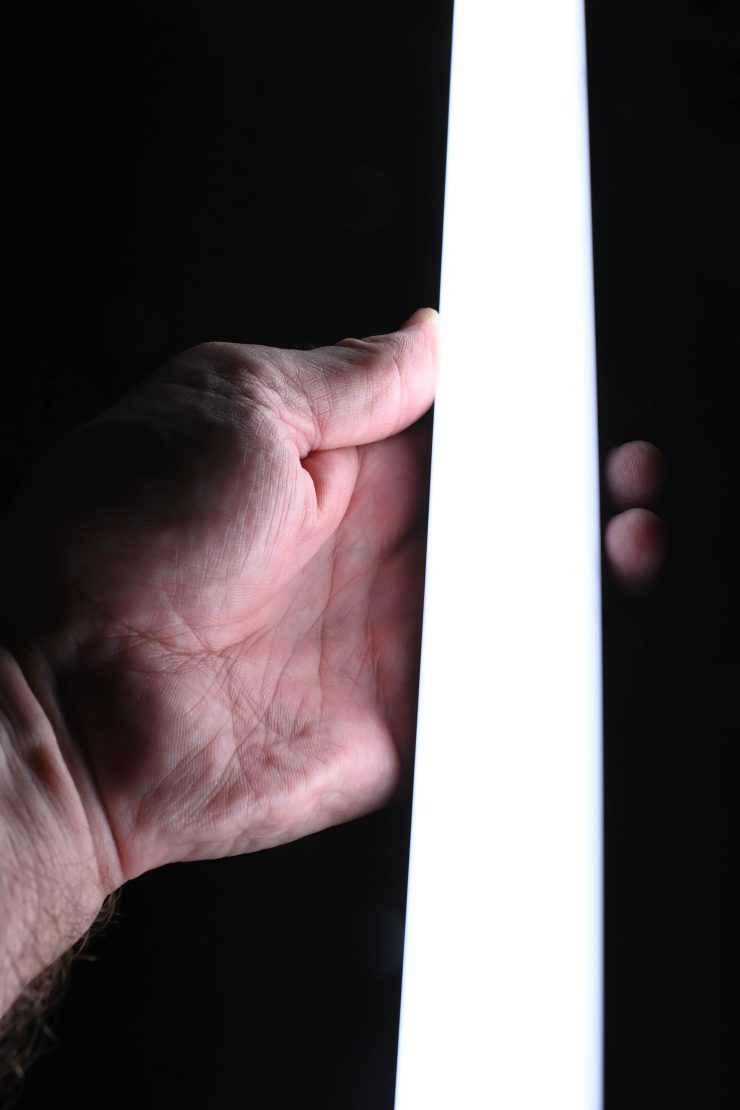
There is no such thing as a perfect light, and most tube lights are filled with compromises that you need to be willing to accept. While you could use them for a whole range of different applications, they are clearly more suited to certain lighting requirements more so than others.
The Sensei ST50 has good Kelvin color accuracy, a nice range of features and capabilities, and it is reasonably well made. The internal battery run time could perhaps be longer and the inability to control the light with an app may put some potential buyers off.
The overall attention to detail is lacking and some of the design choices SOONWELL went with are a little confusing, to say the least.
All in all, the SOONWELL Sensei ST50 is a decent offering if you are looking for a RGBWW tube light, however, it isn’t without its issues and it faces stiff competition from more well-known existing brands.
Like what we do and want to support Newsshooter? Consider becoming a Patreon supporter and help us to continue being the best source of news and reviews for professional tools for the independent filmmaker.

